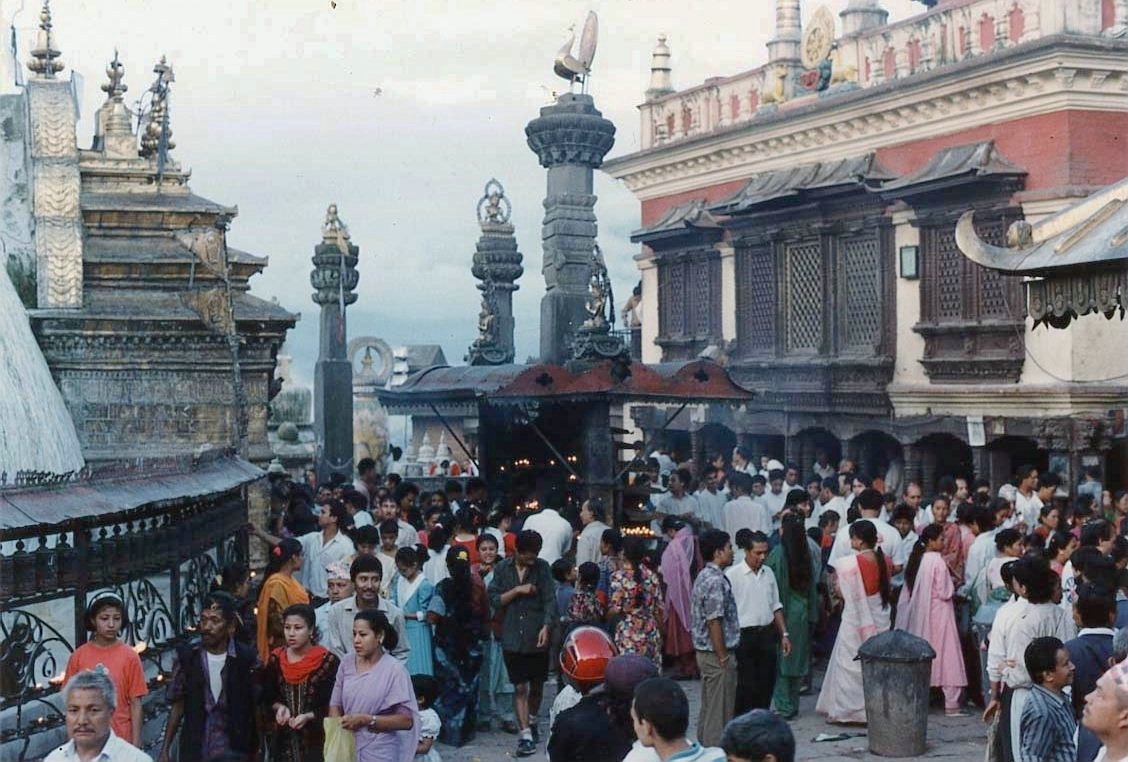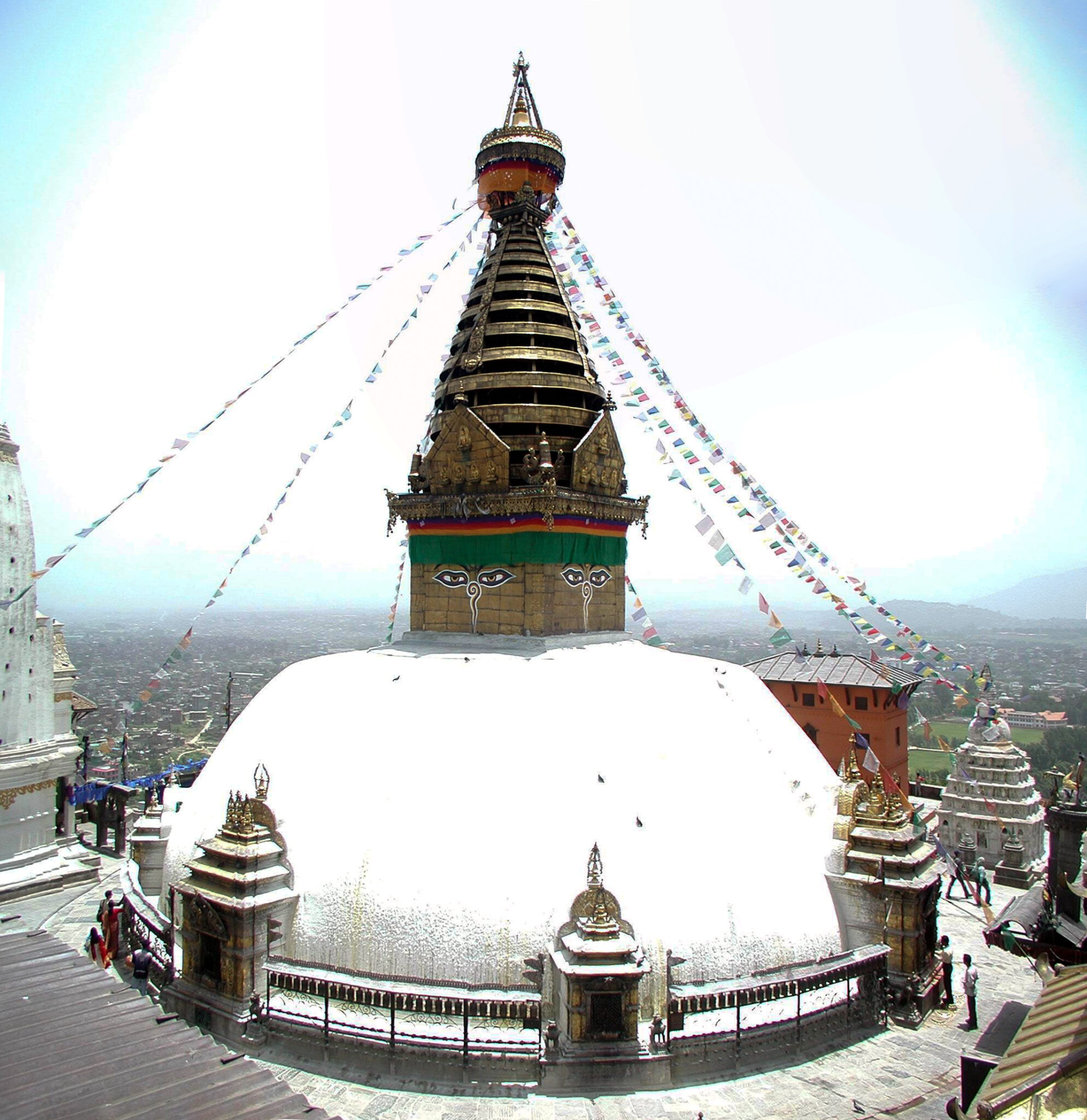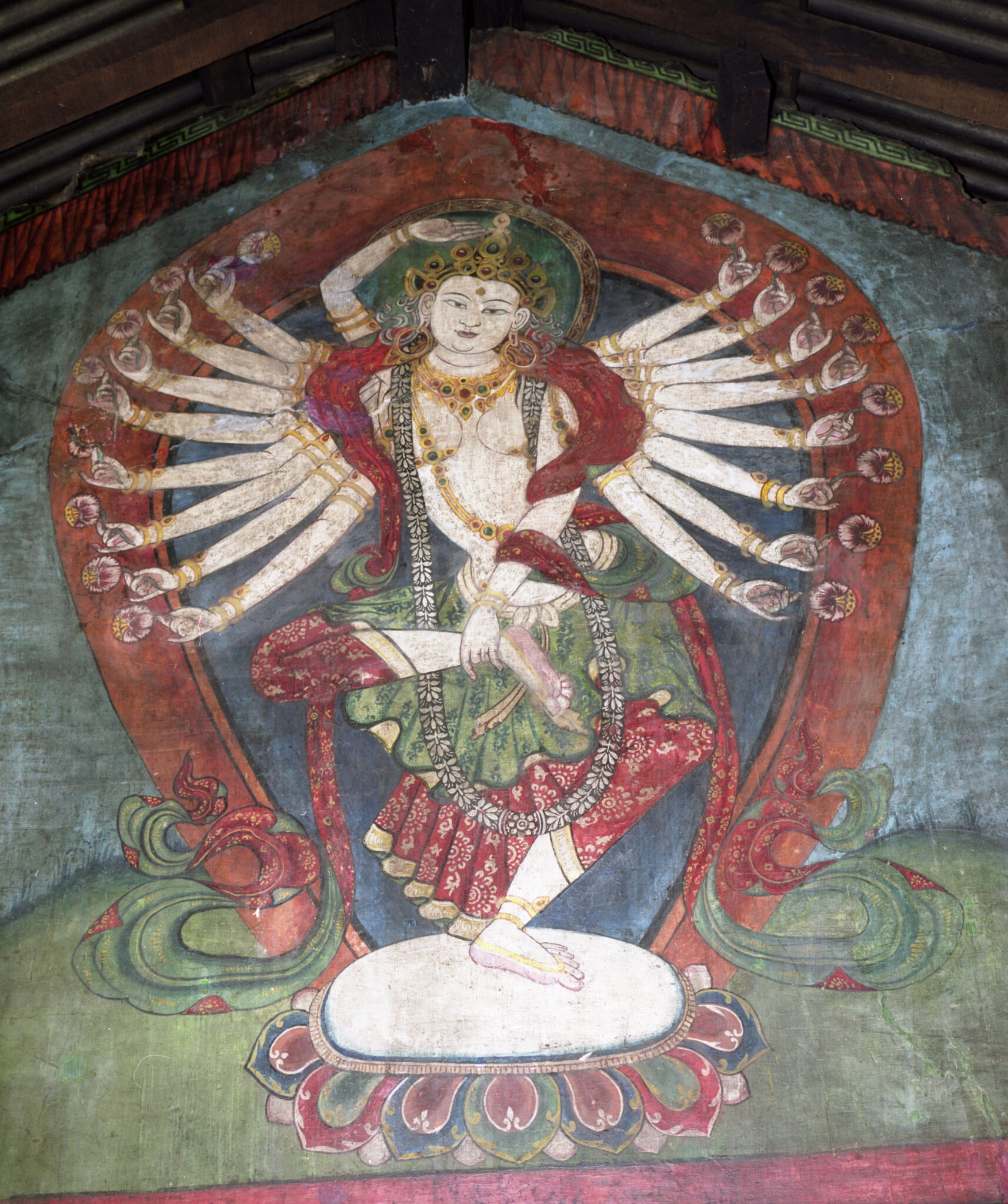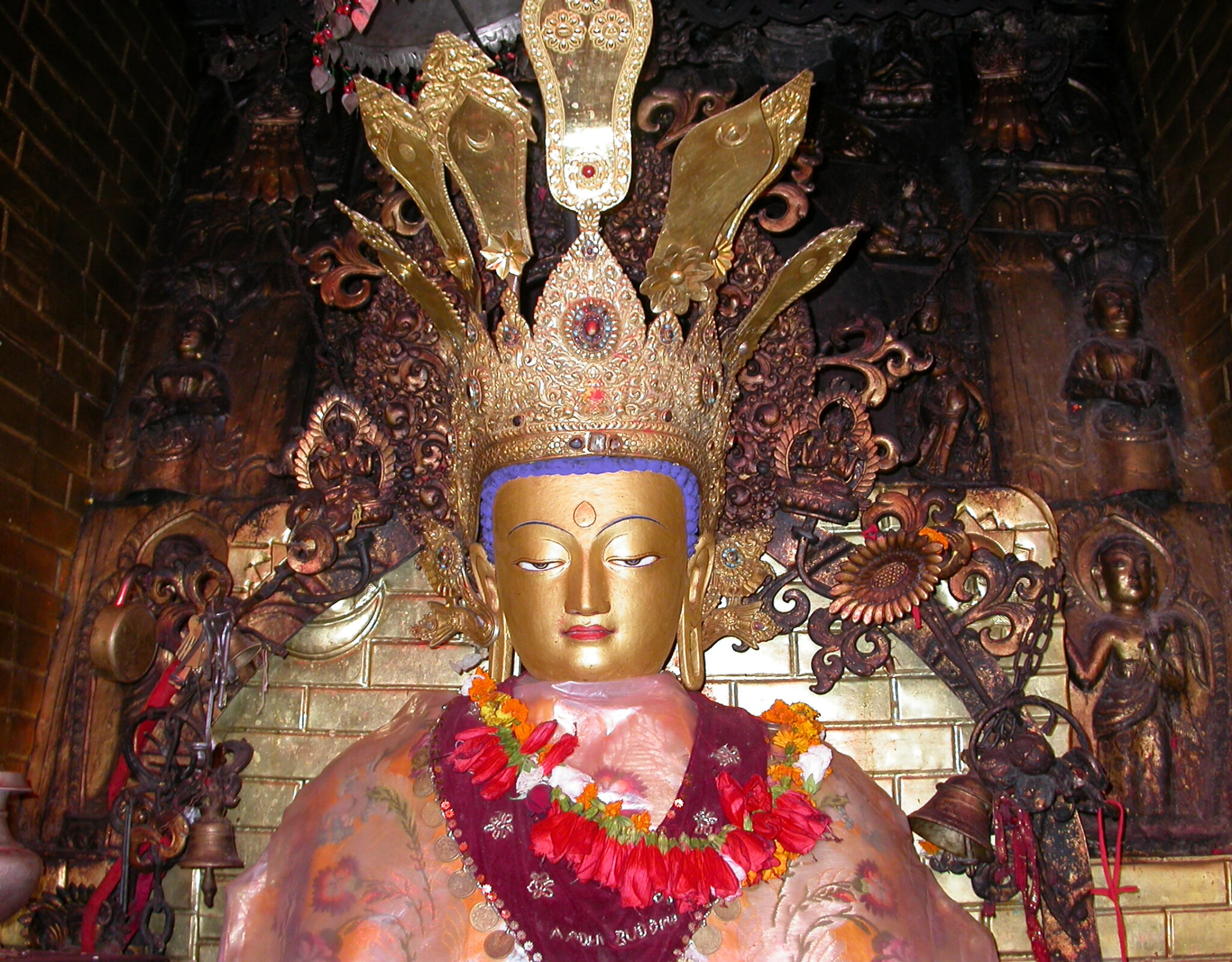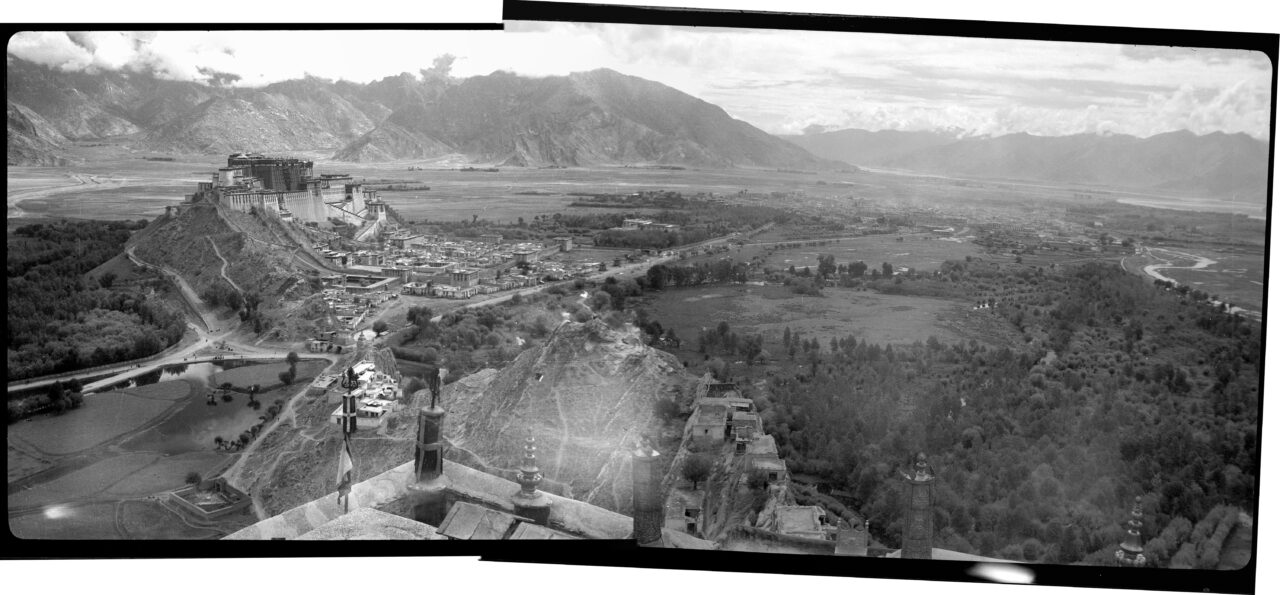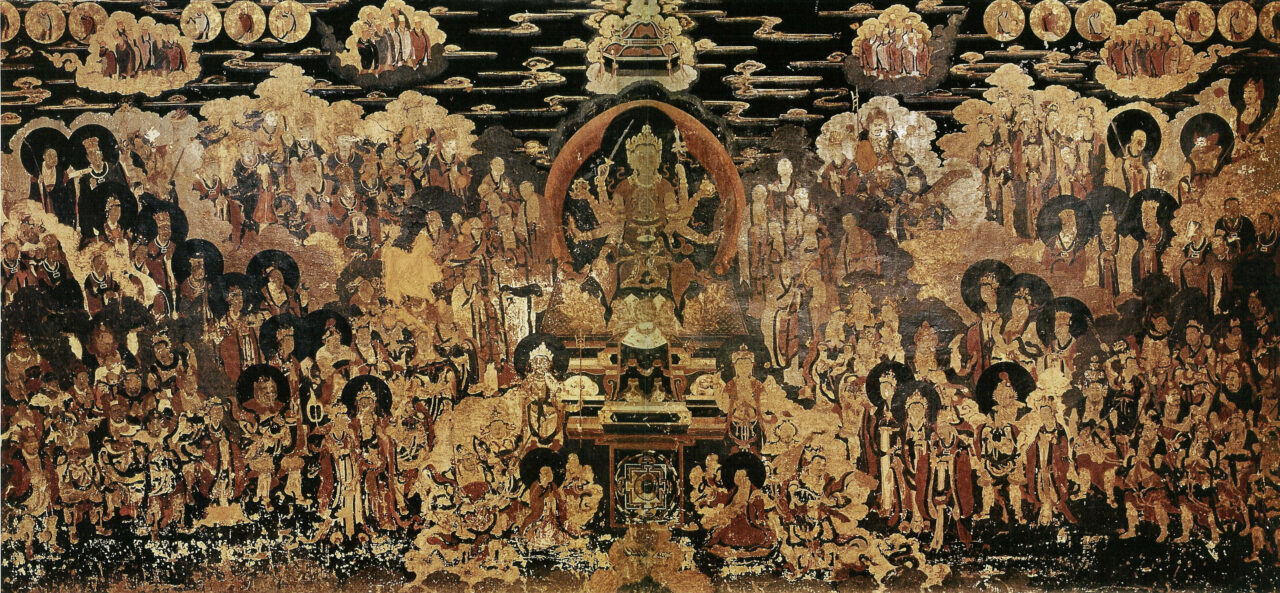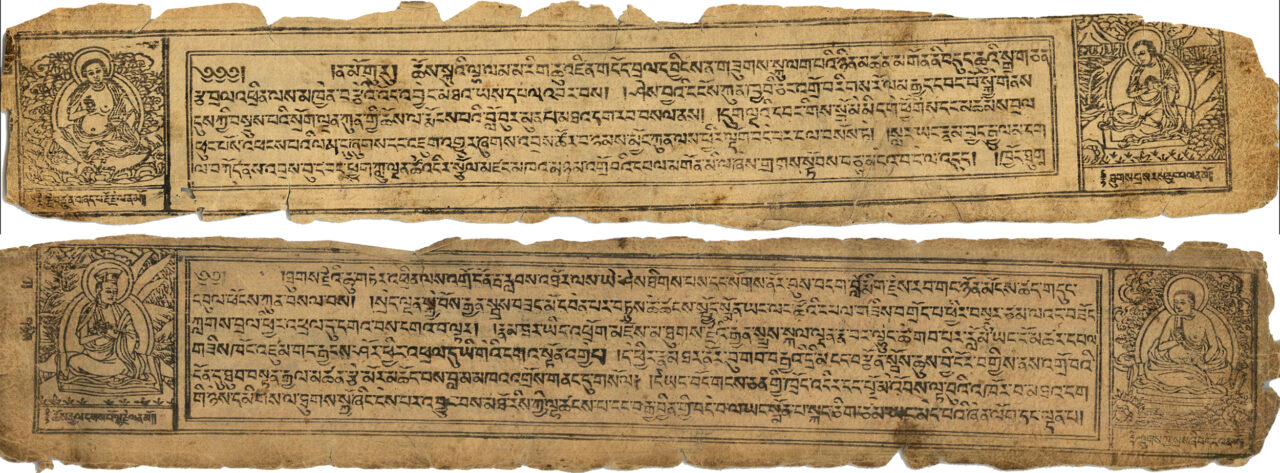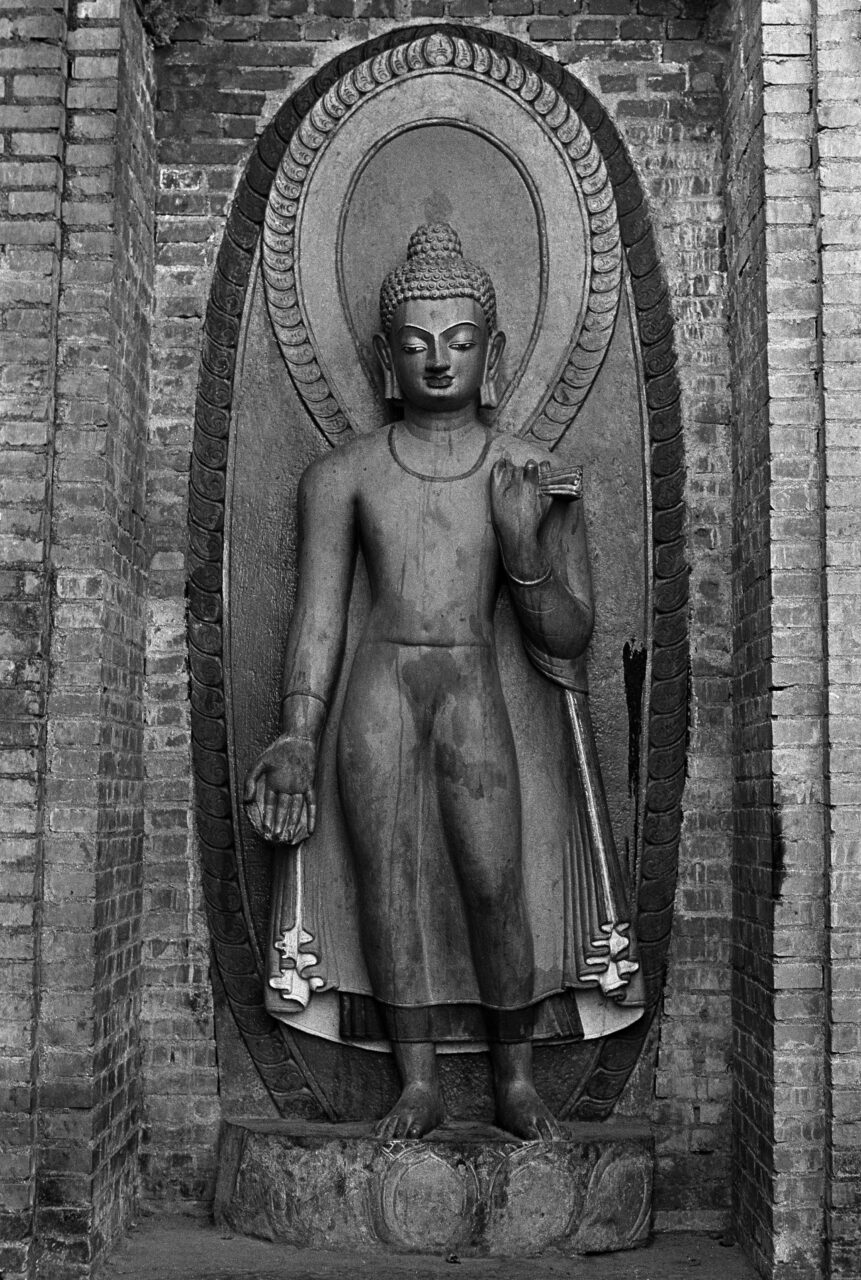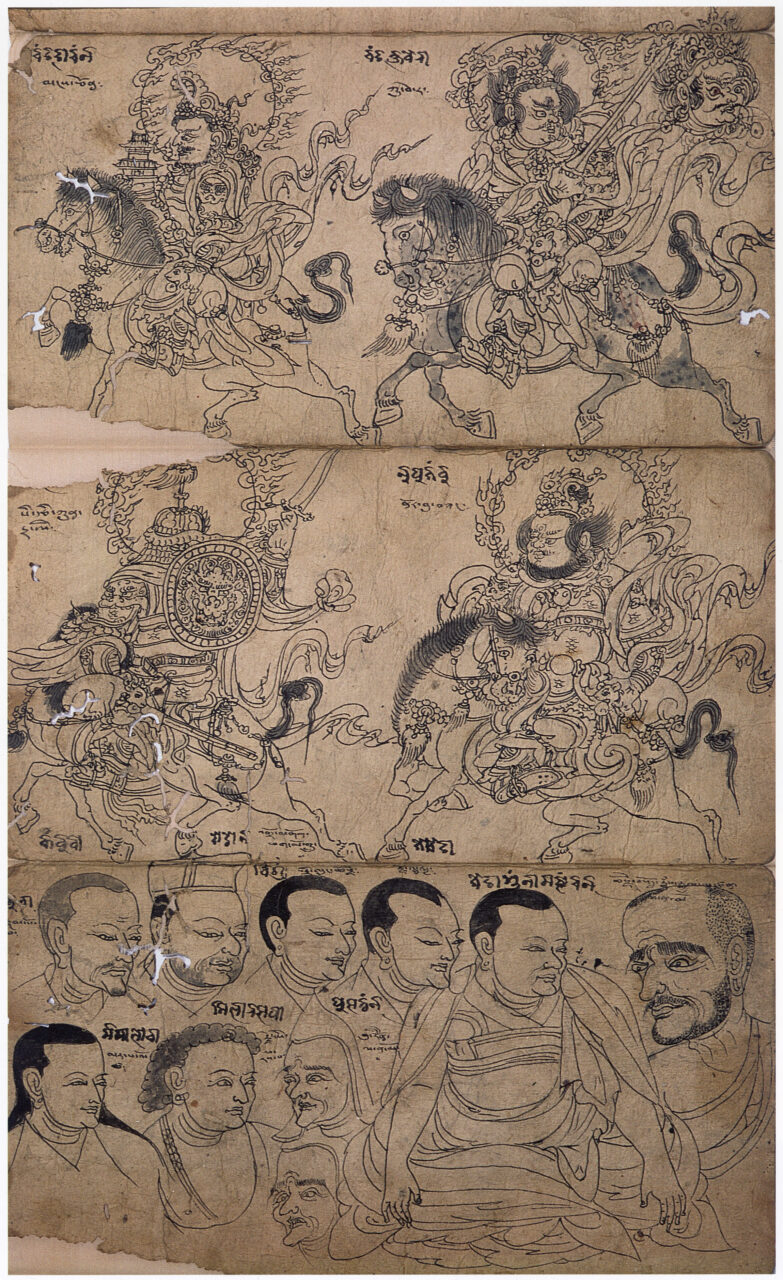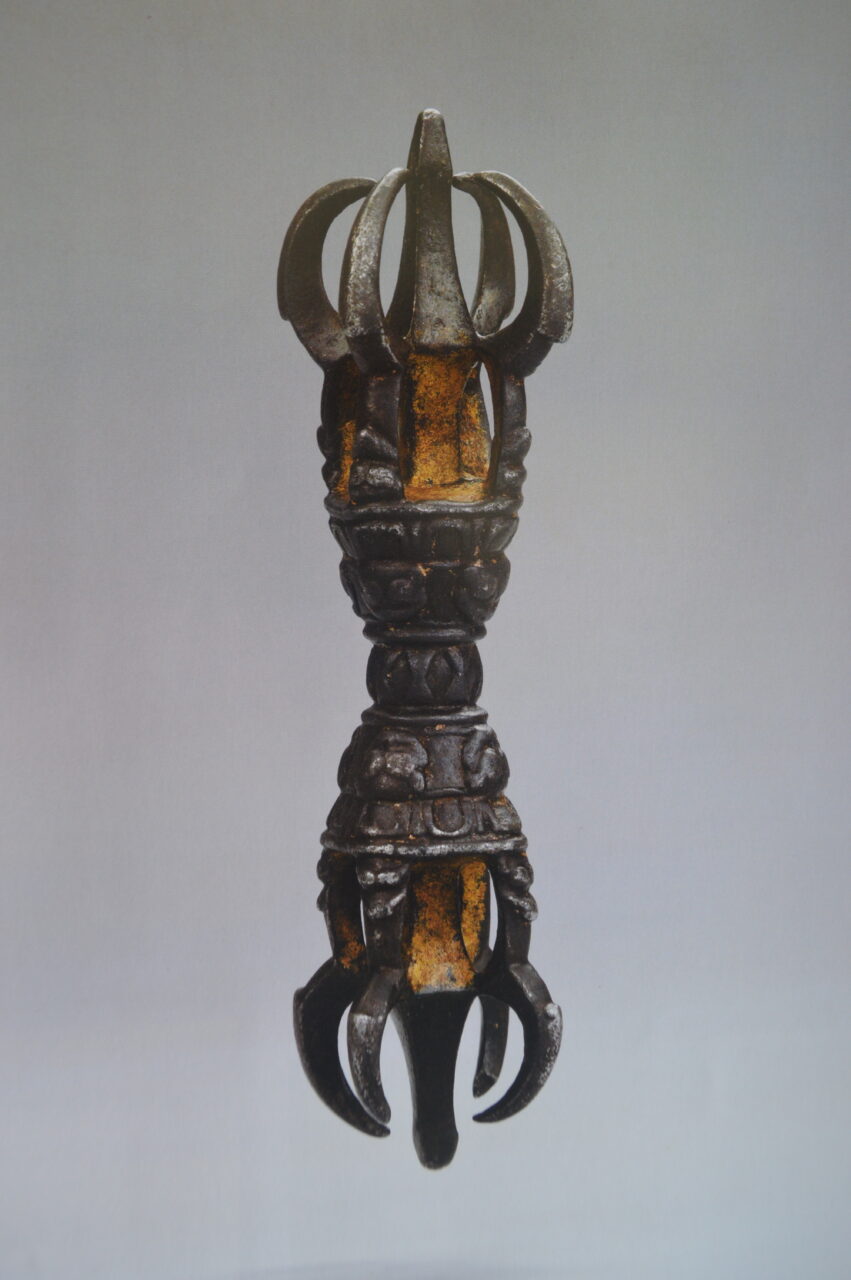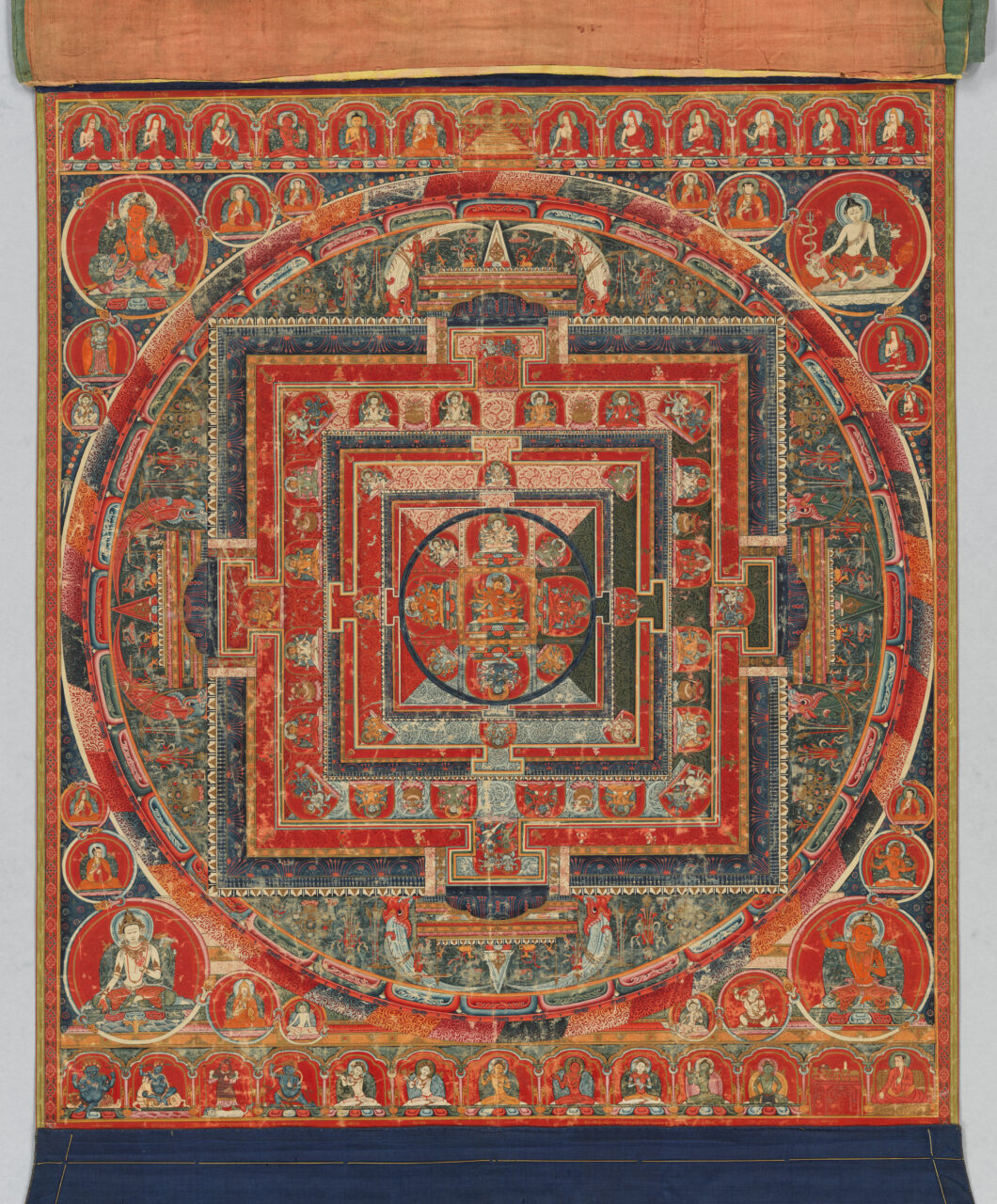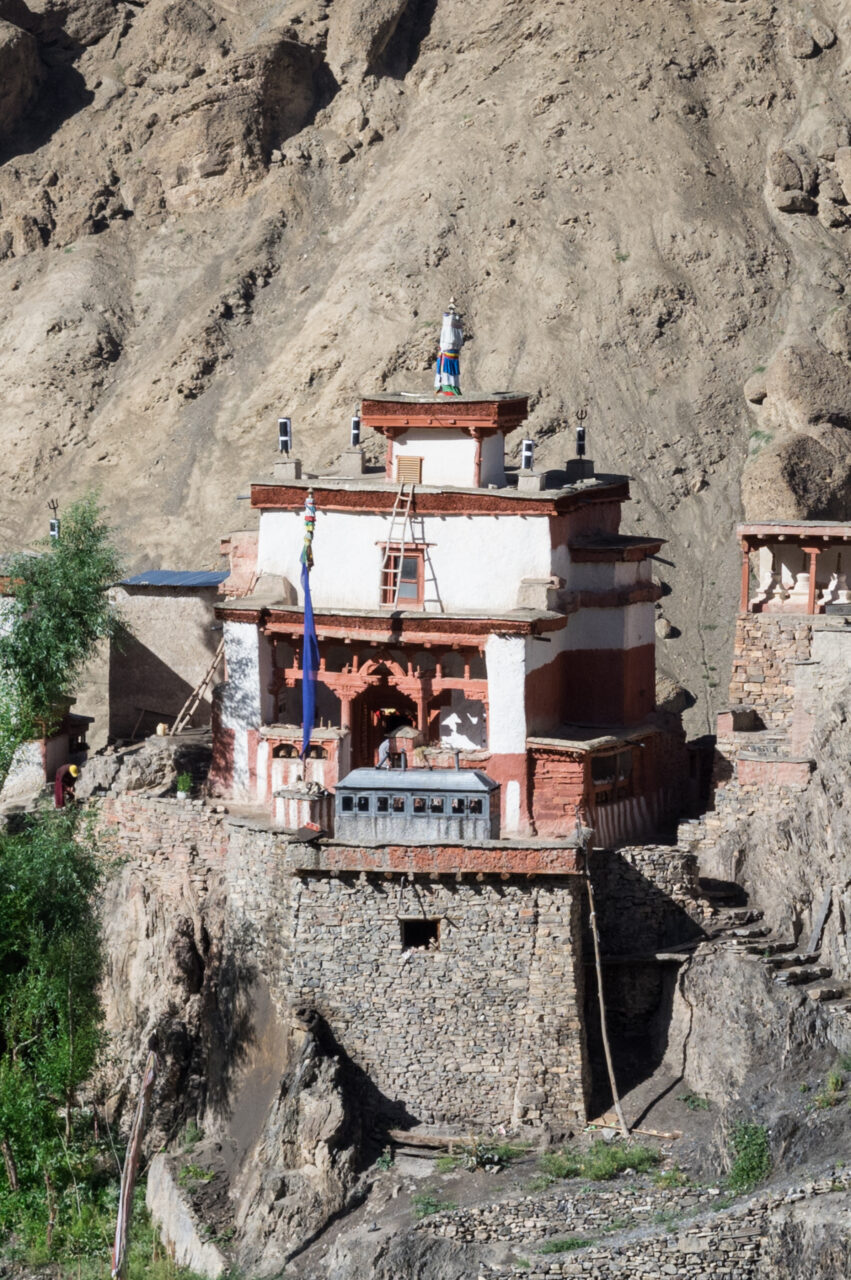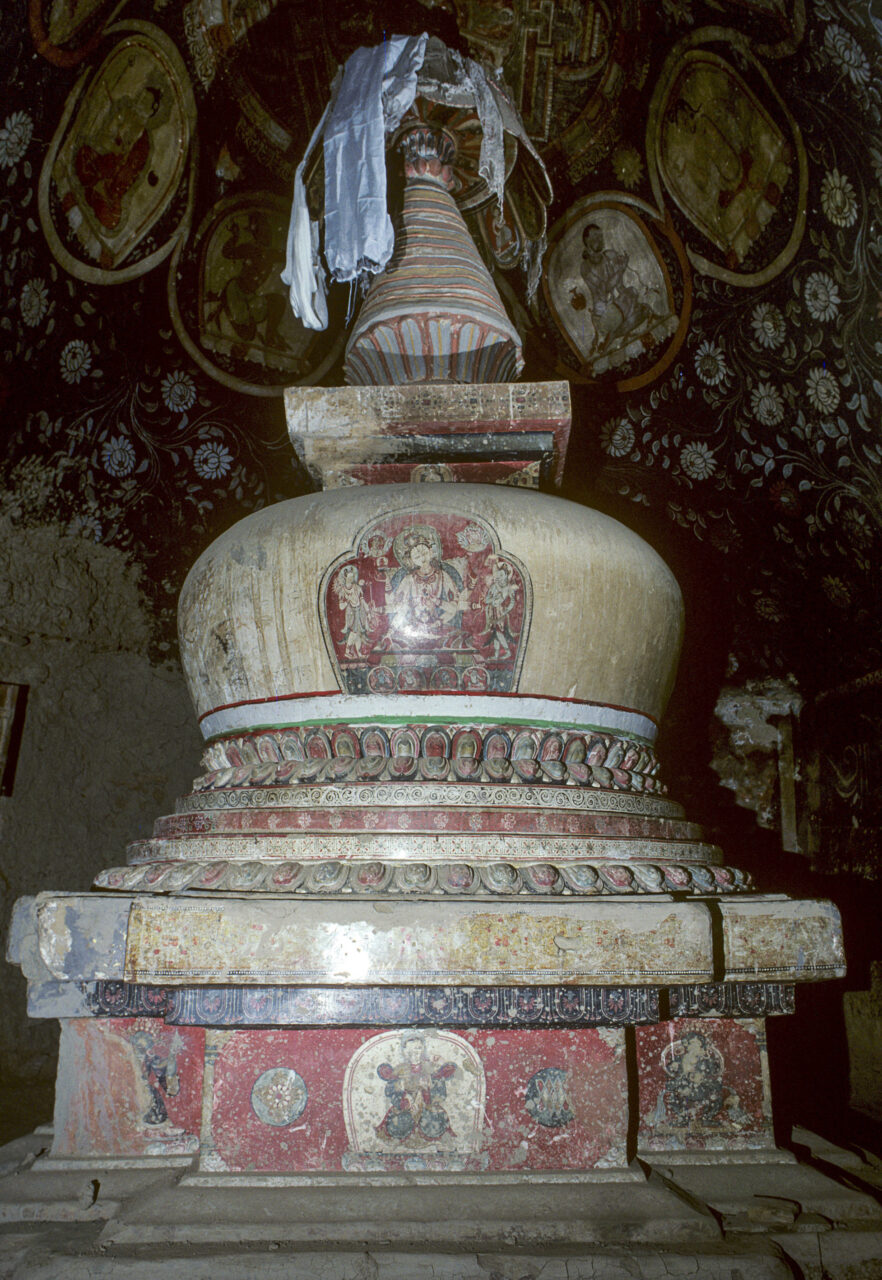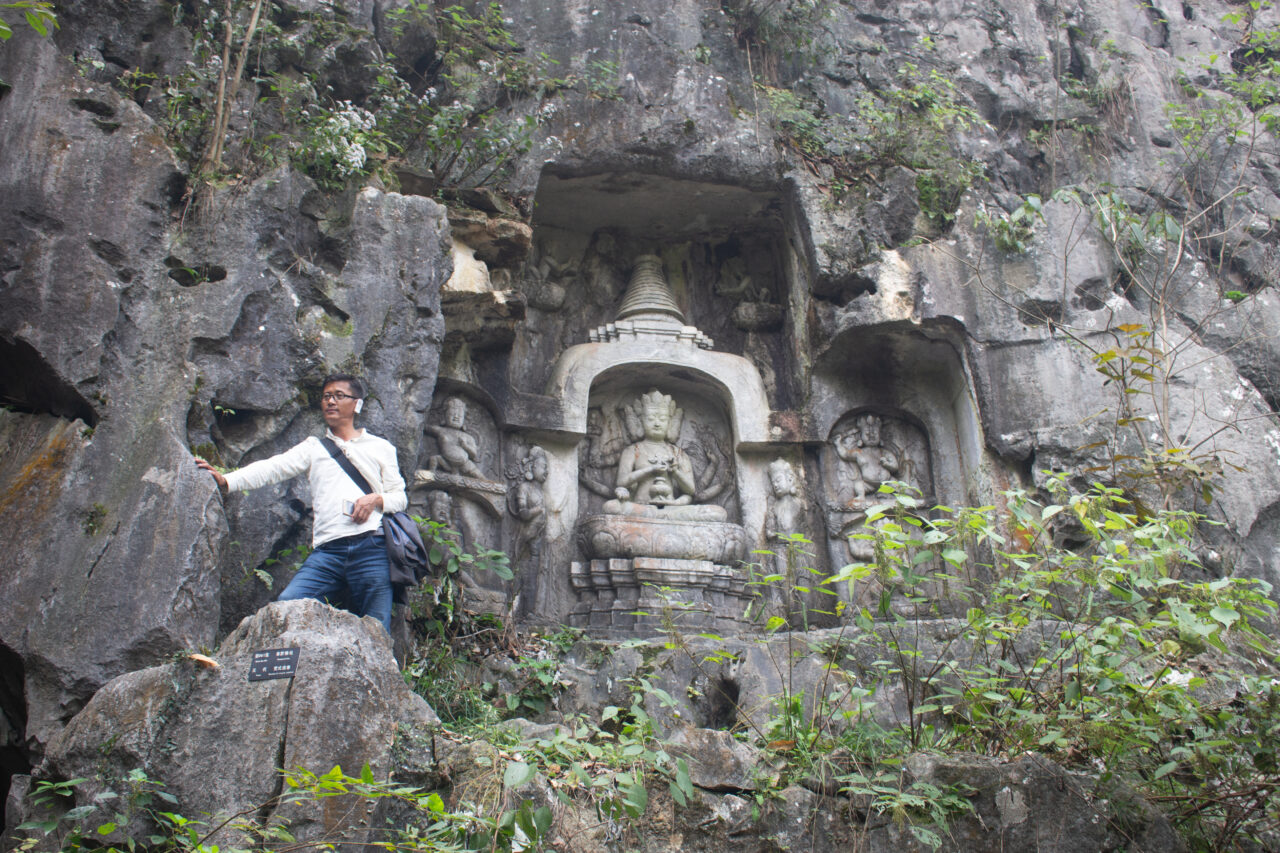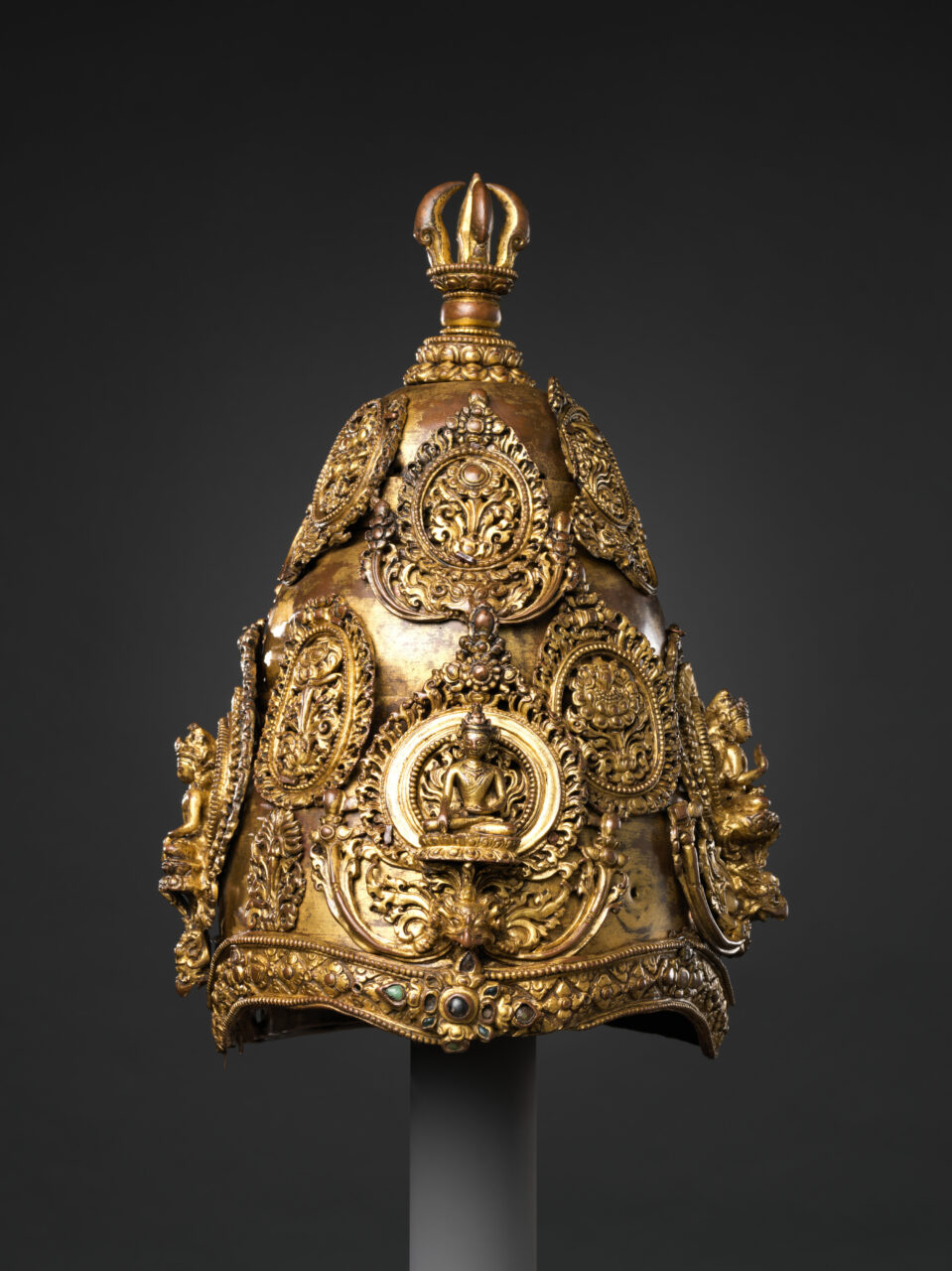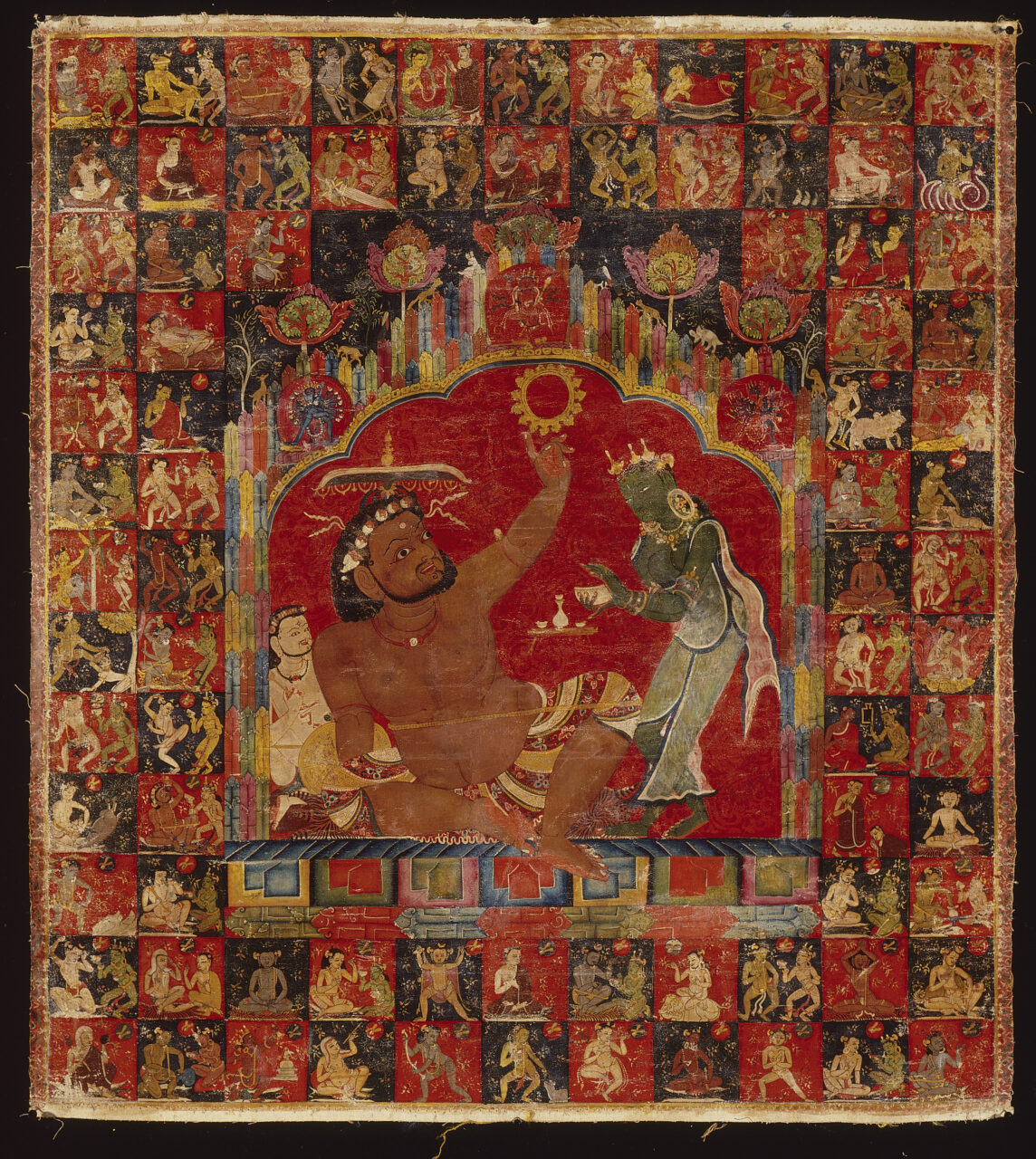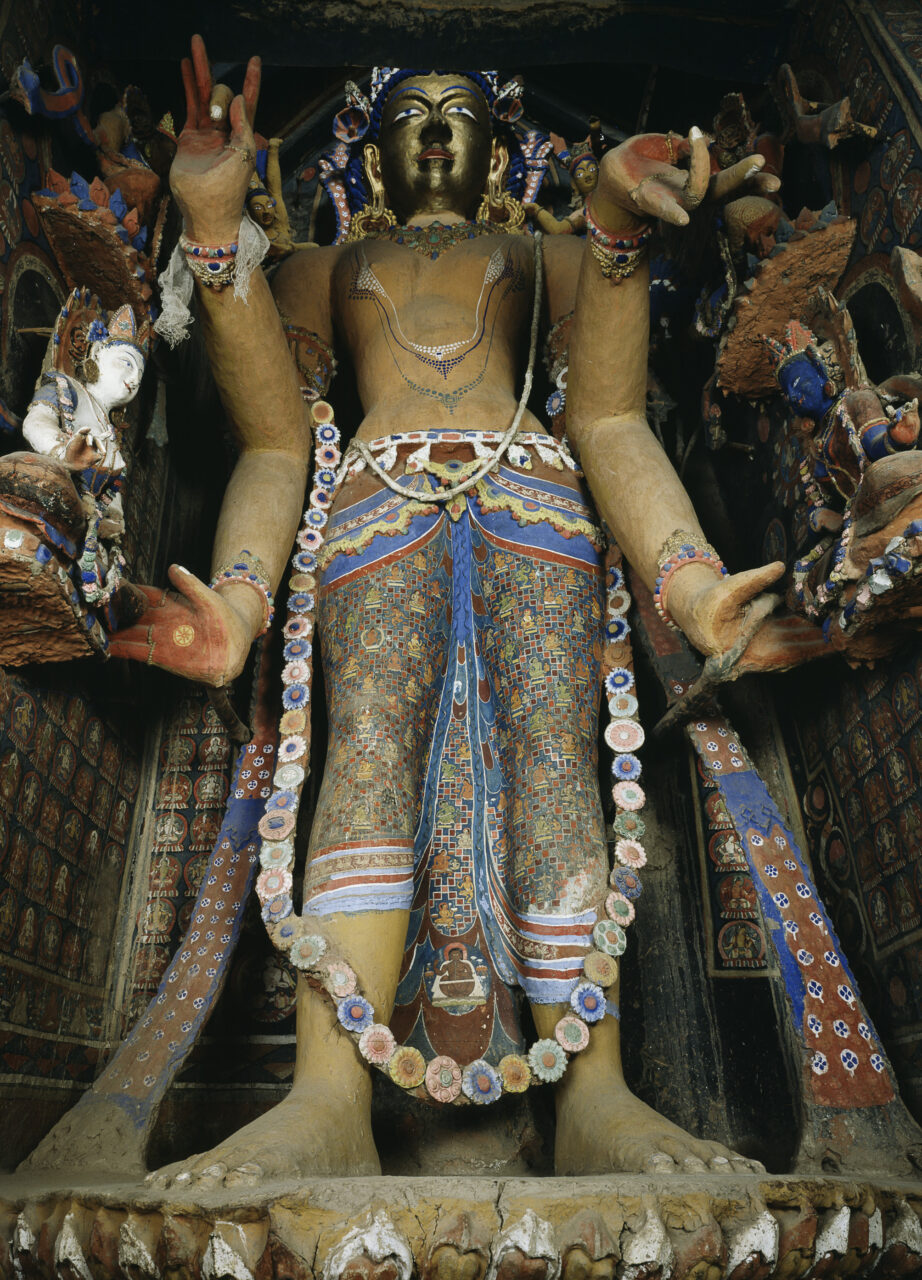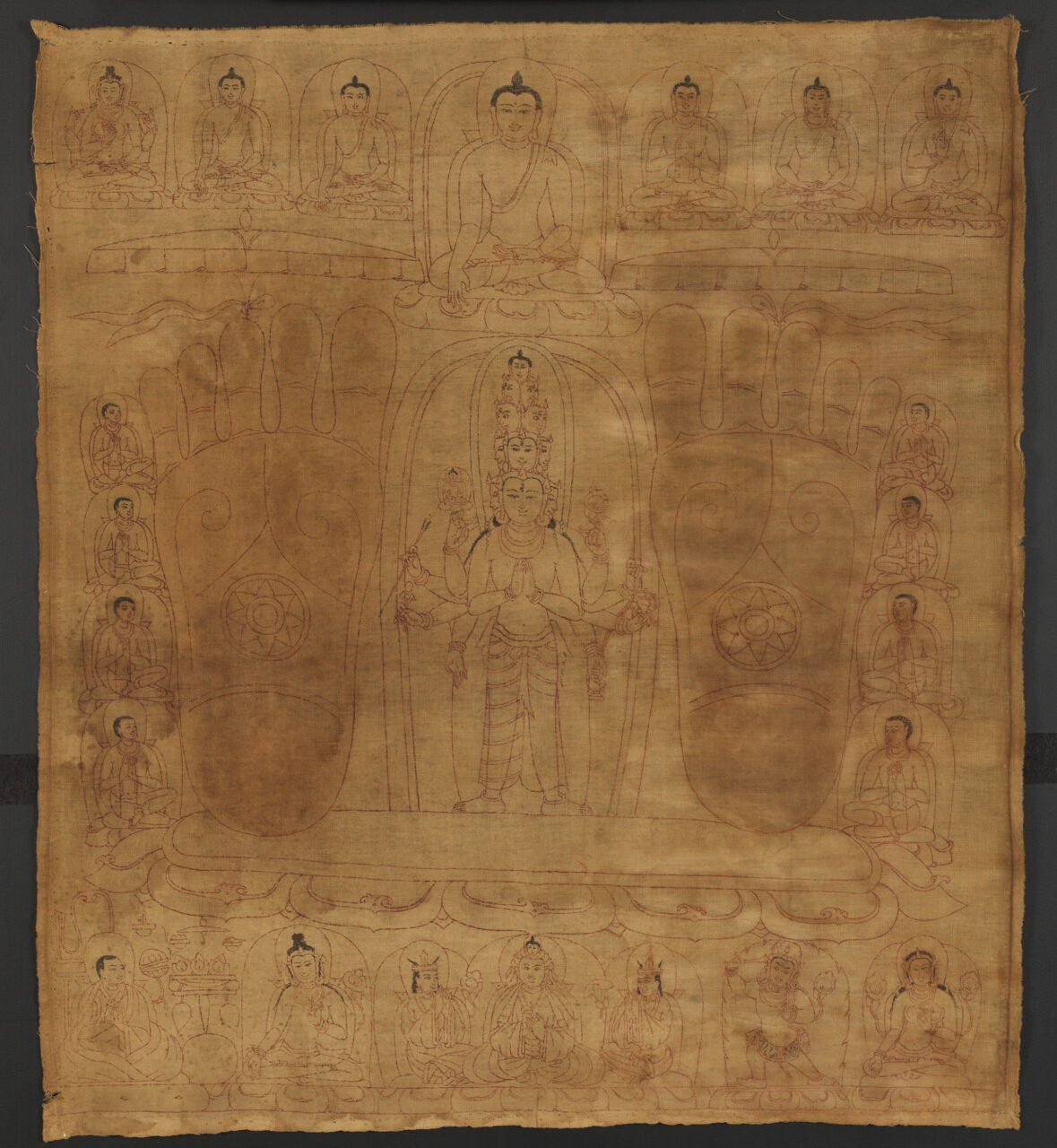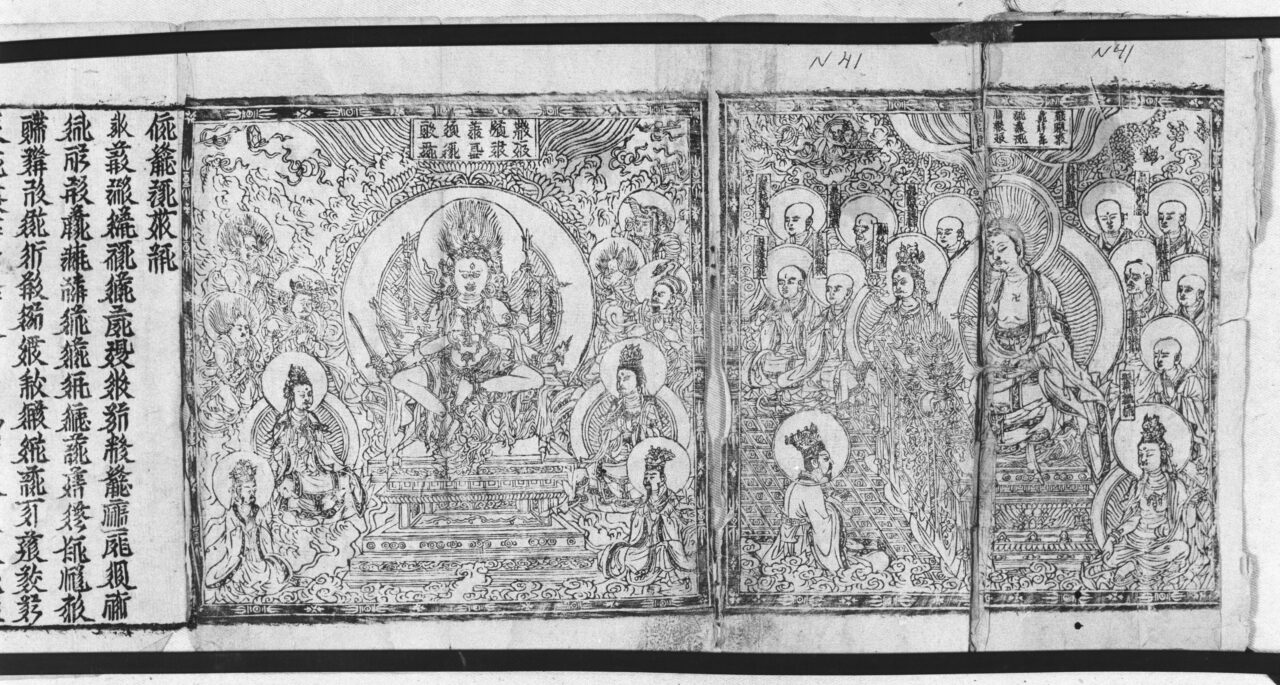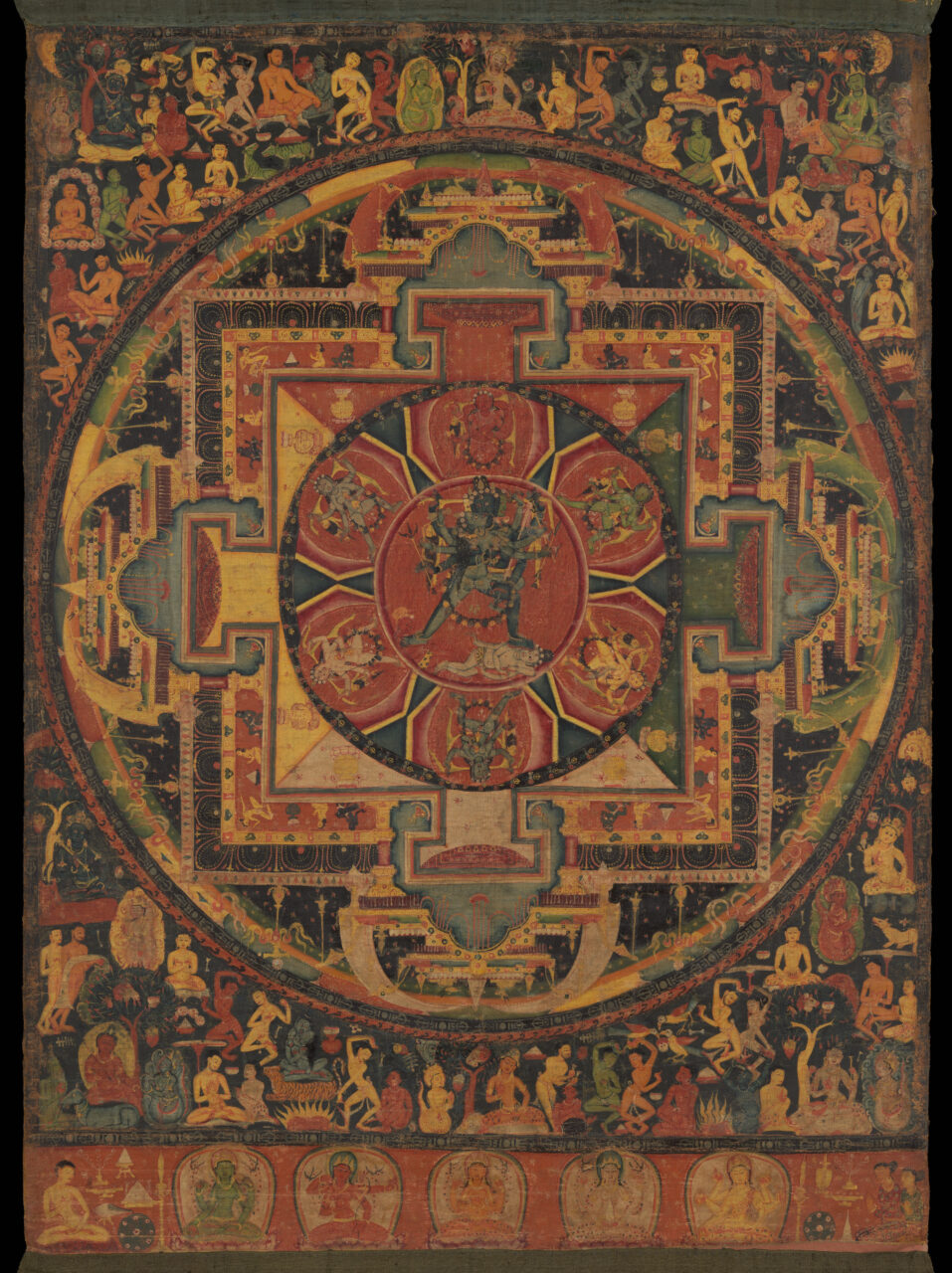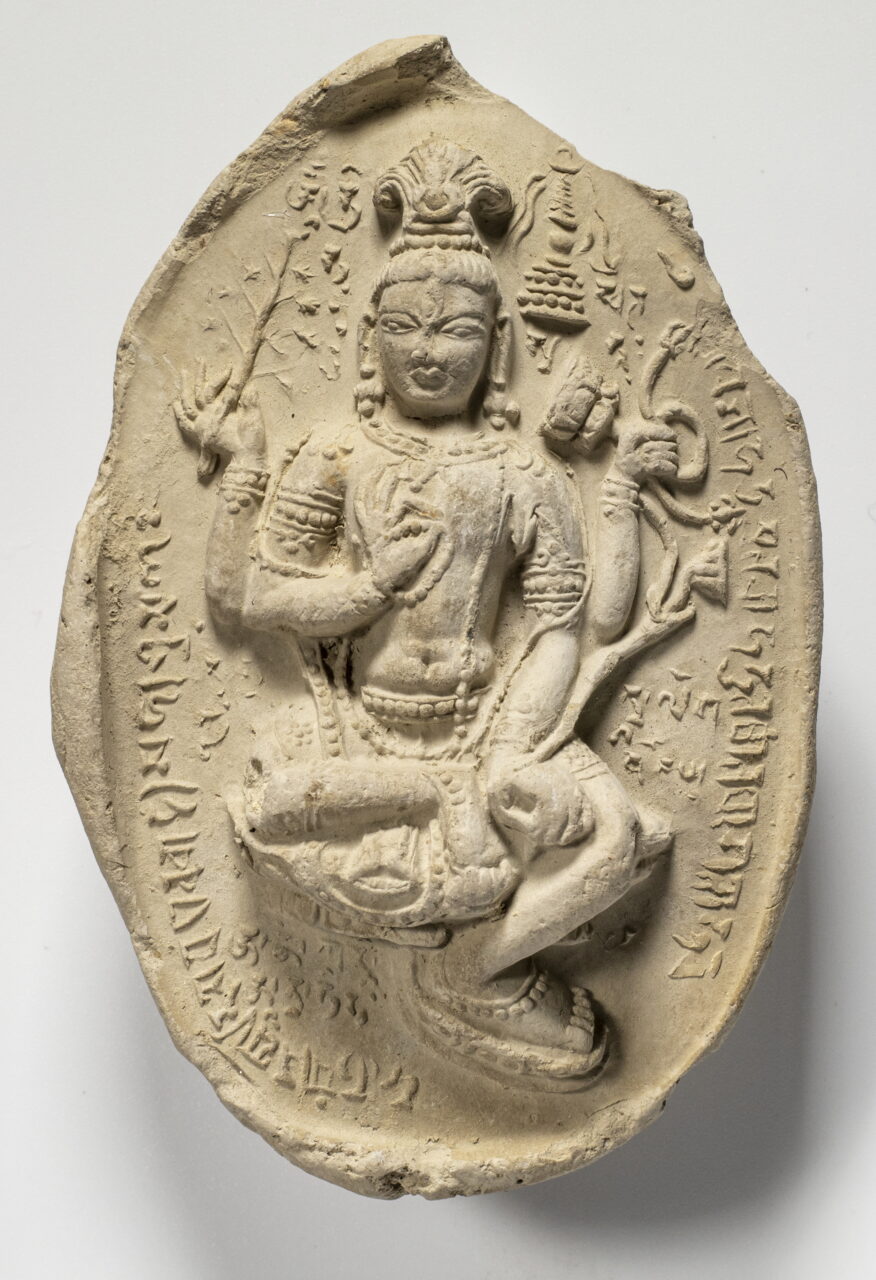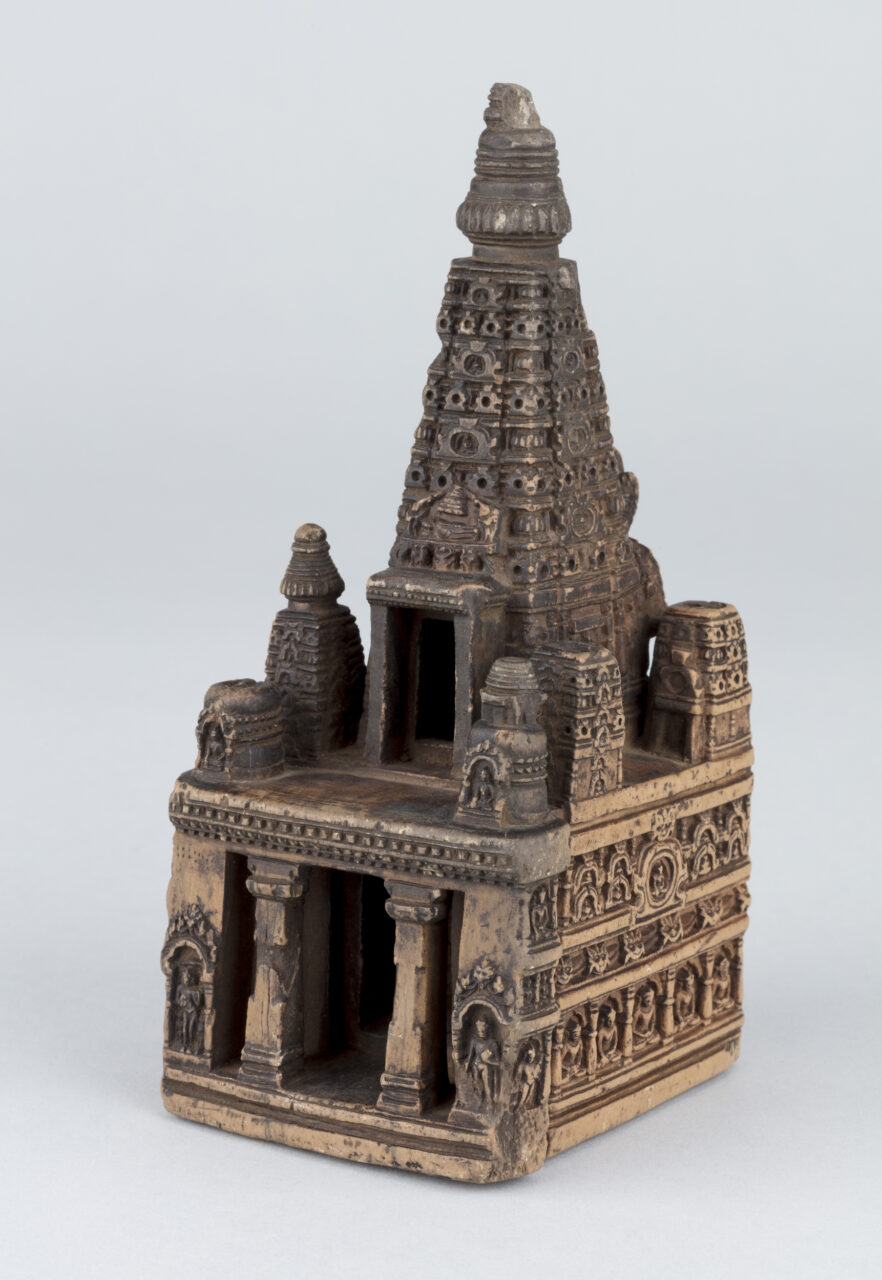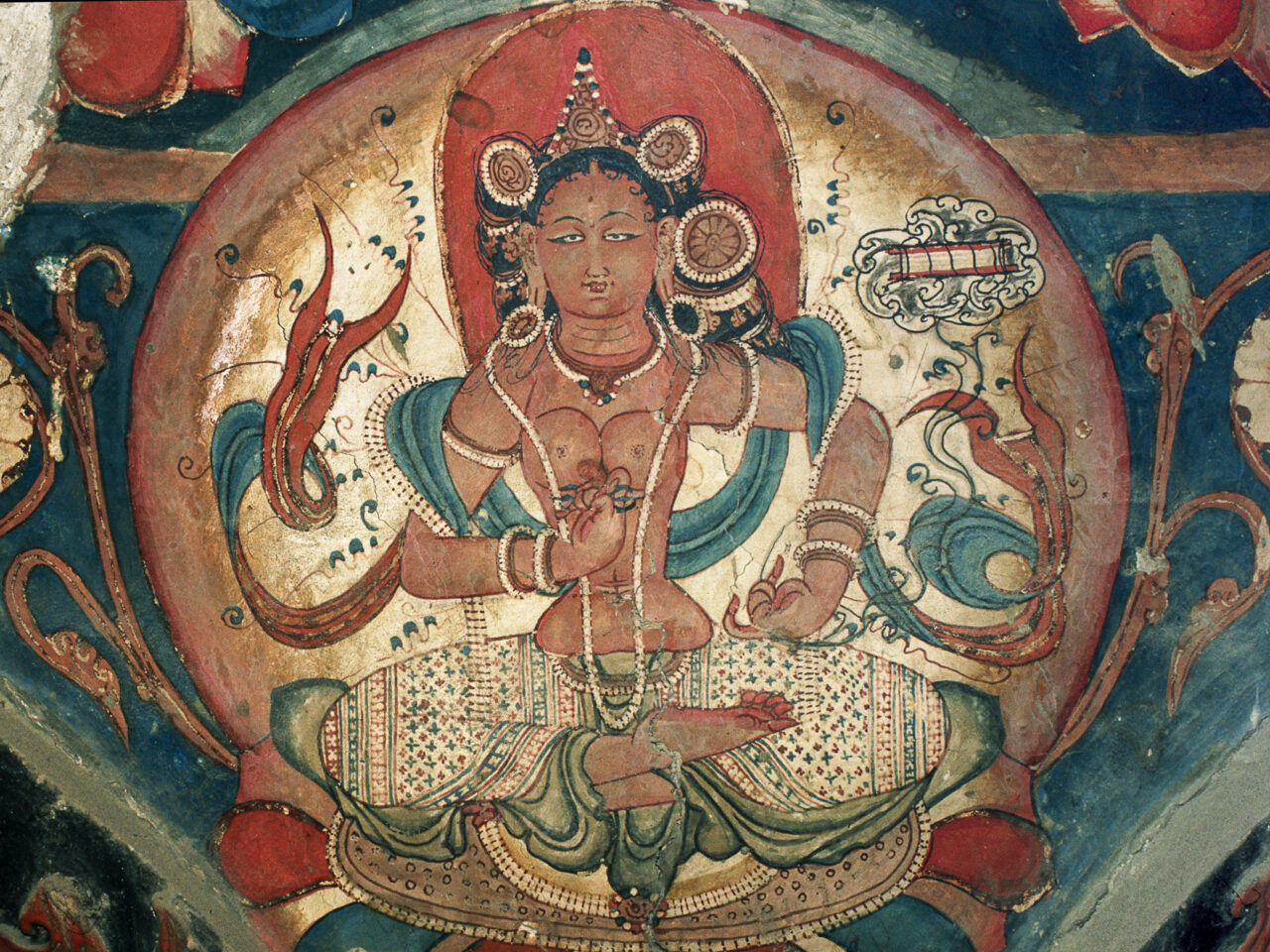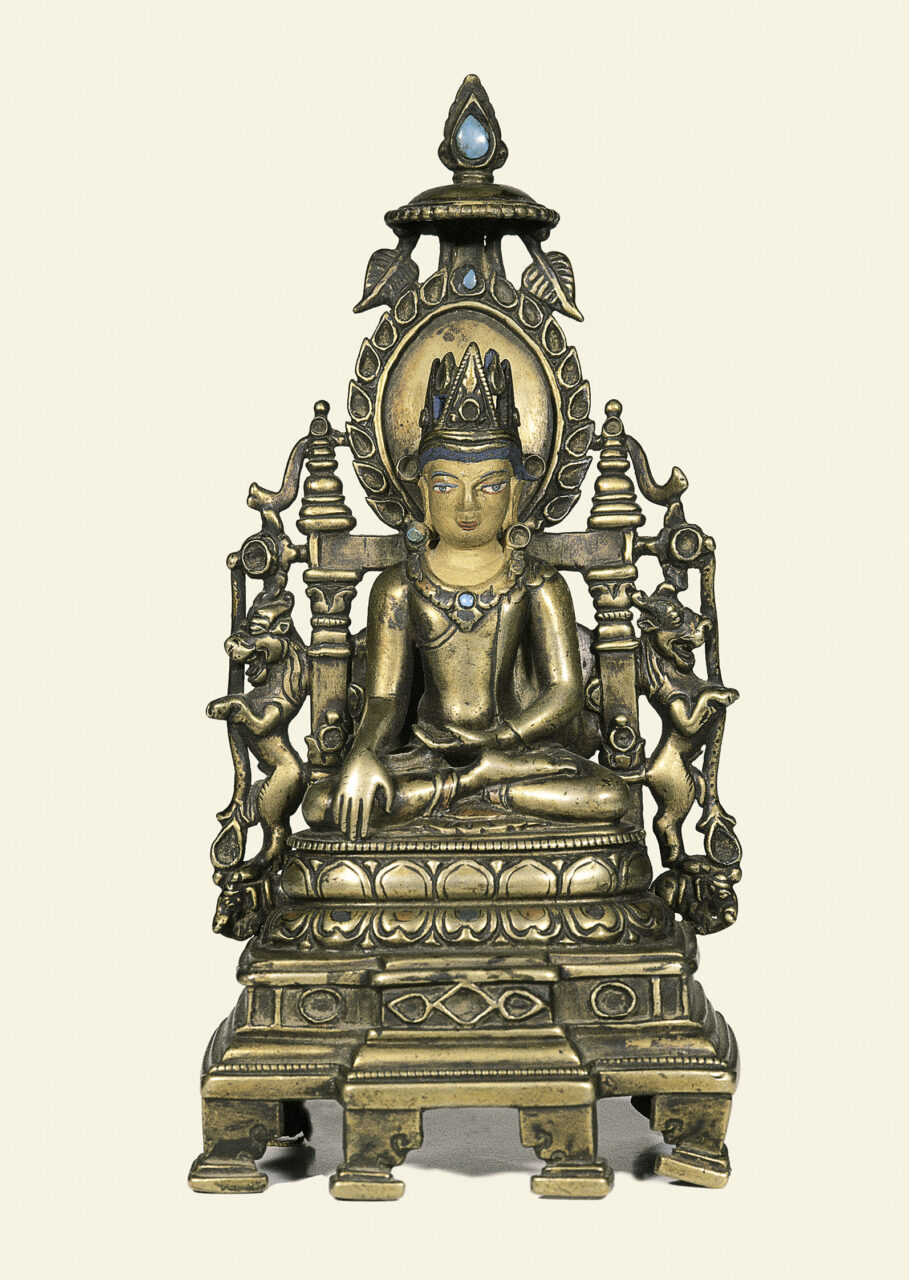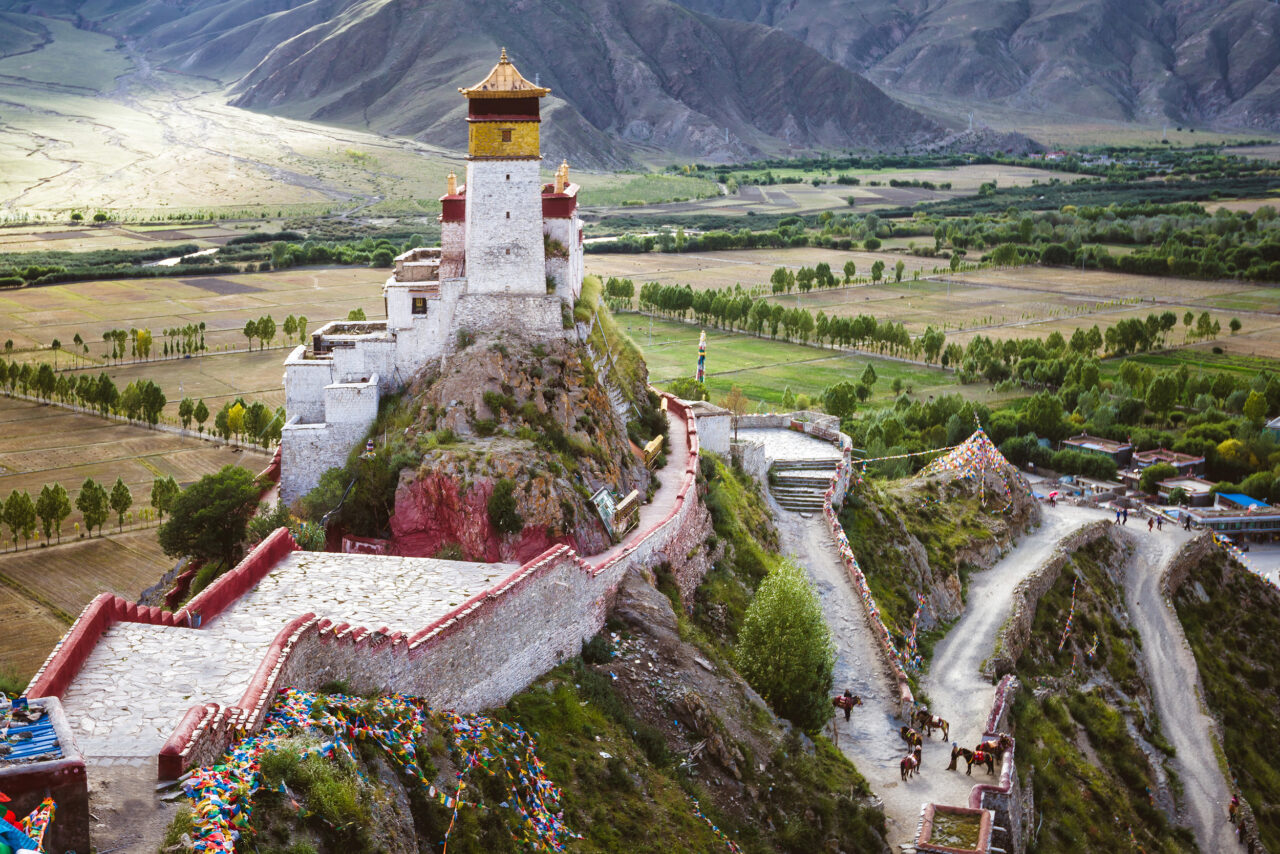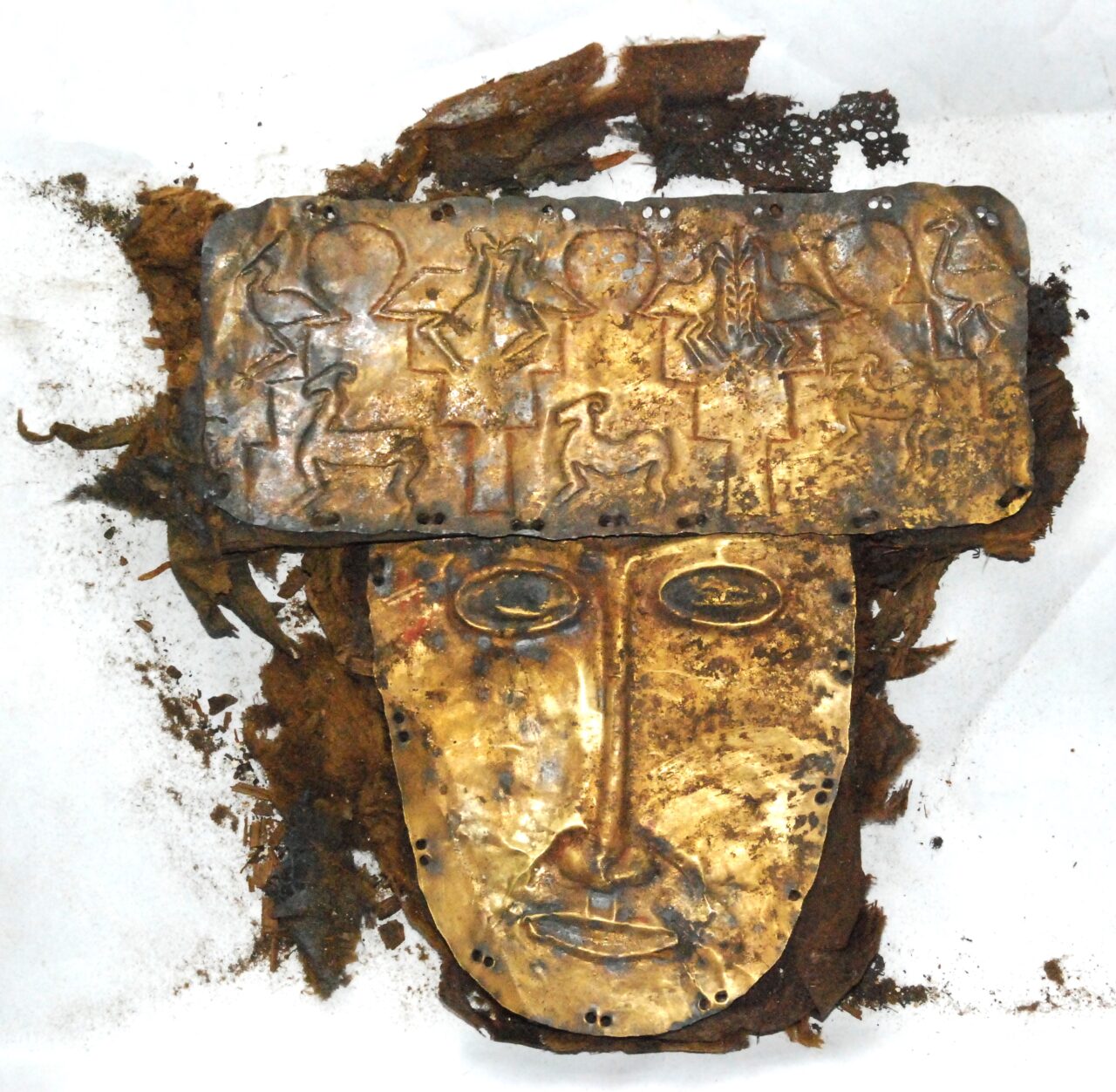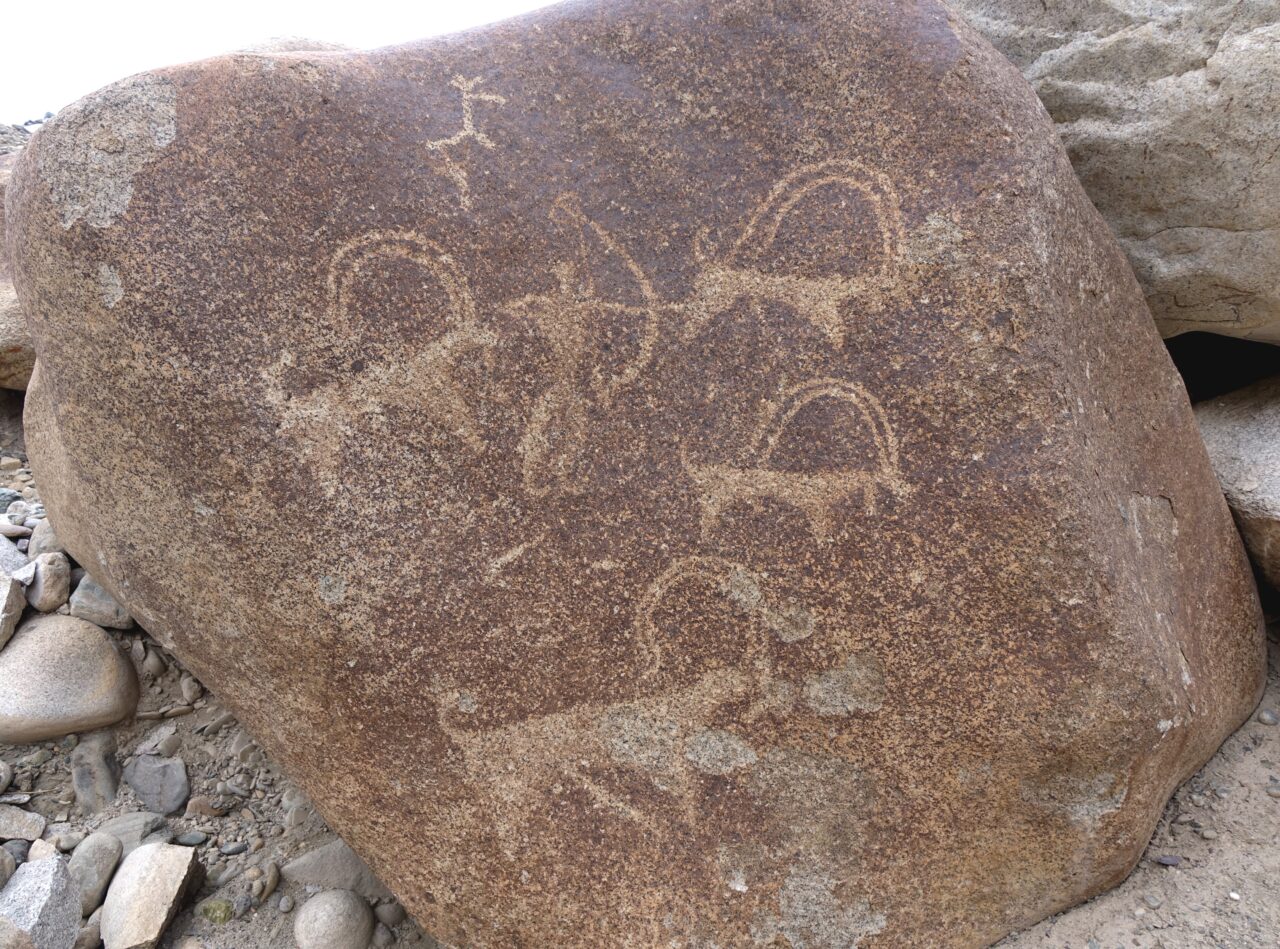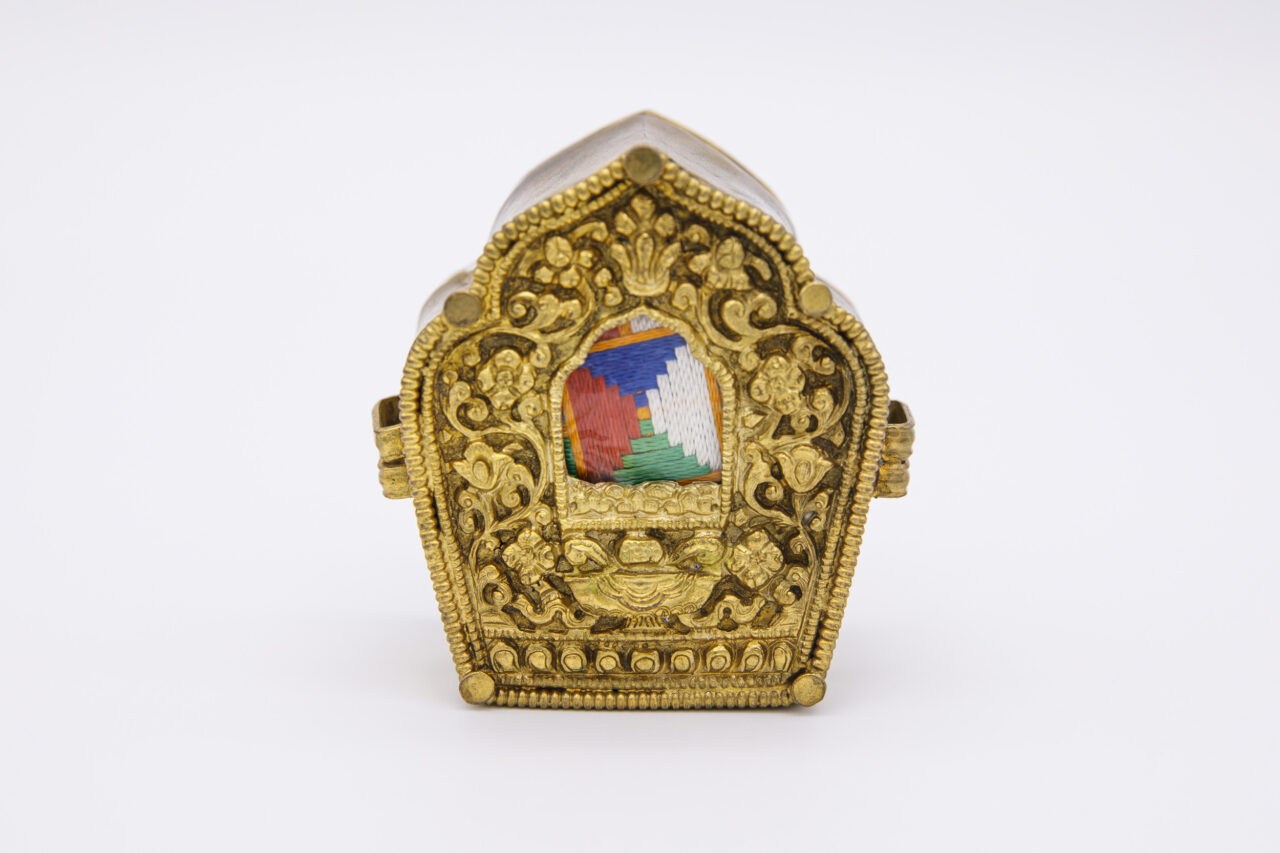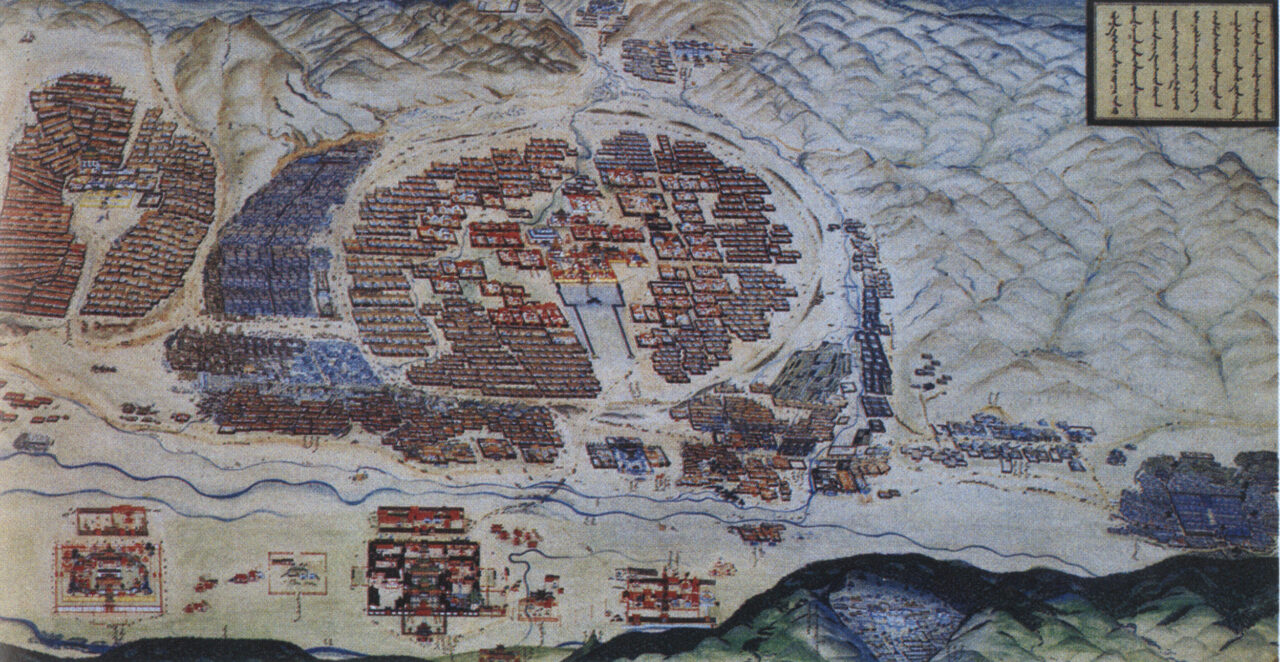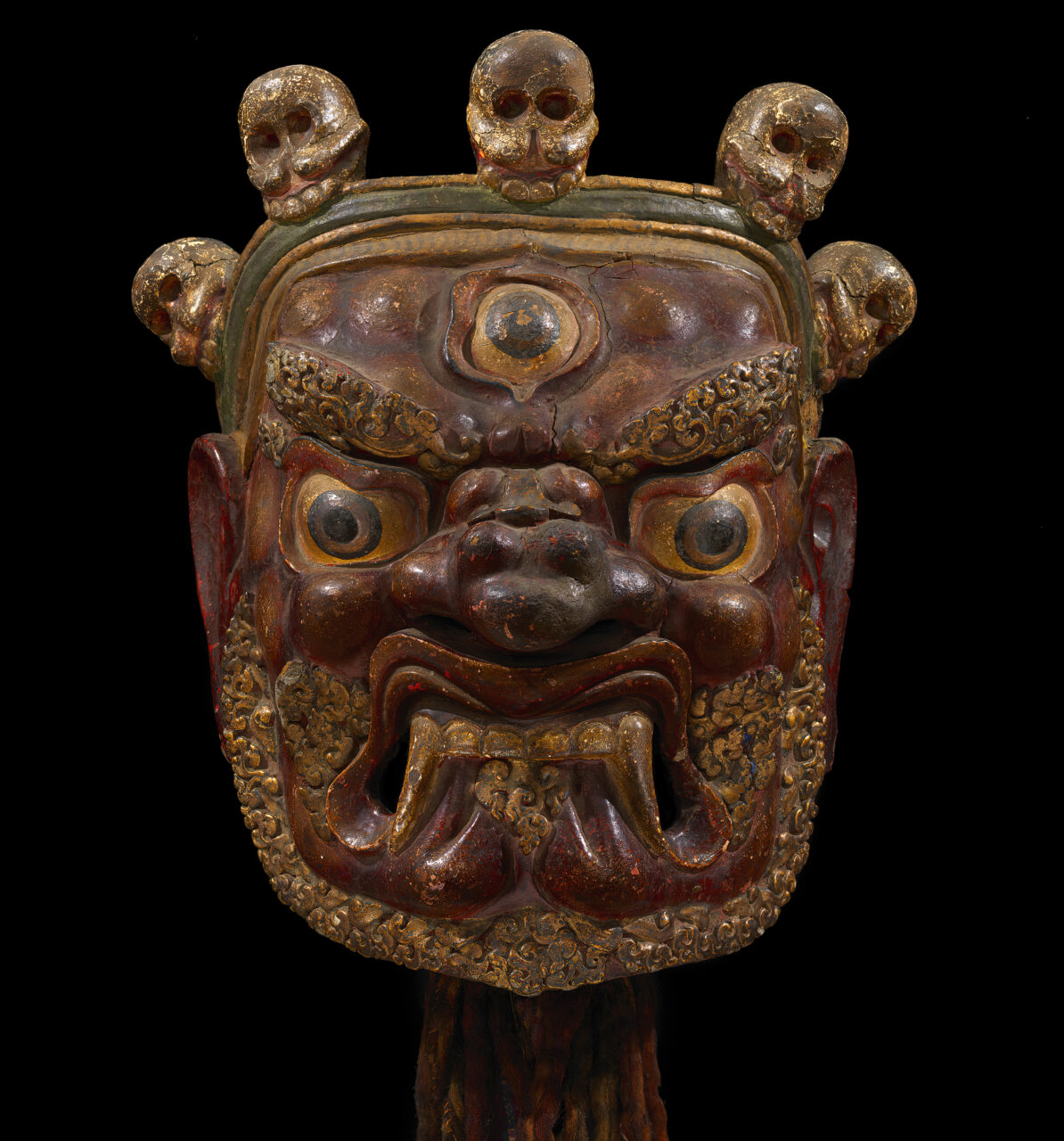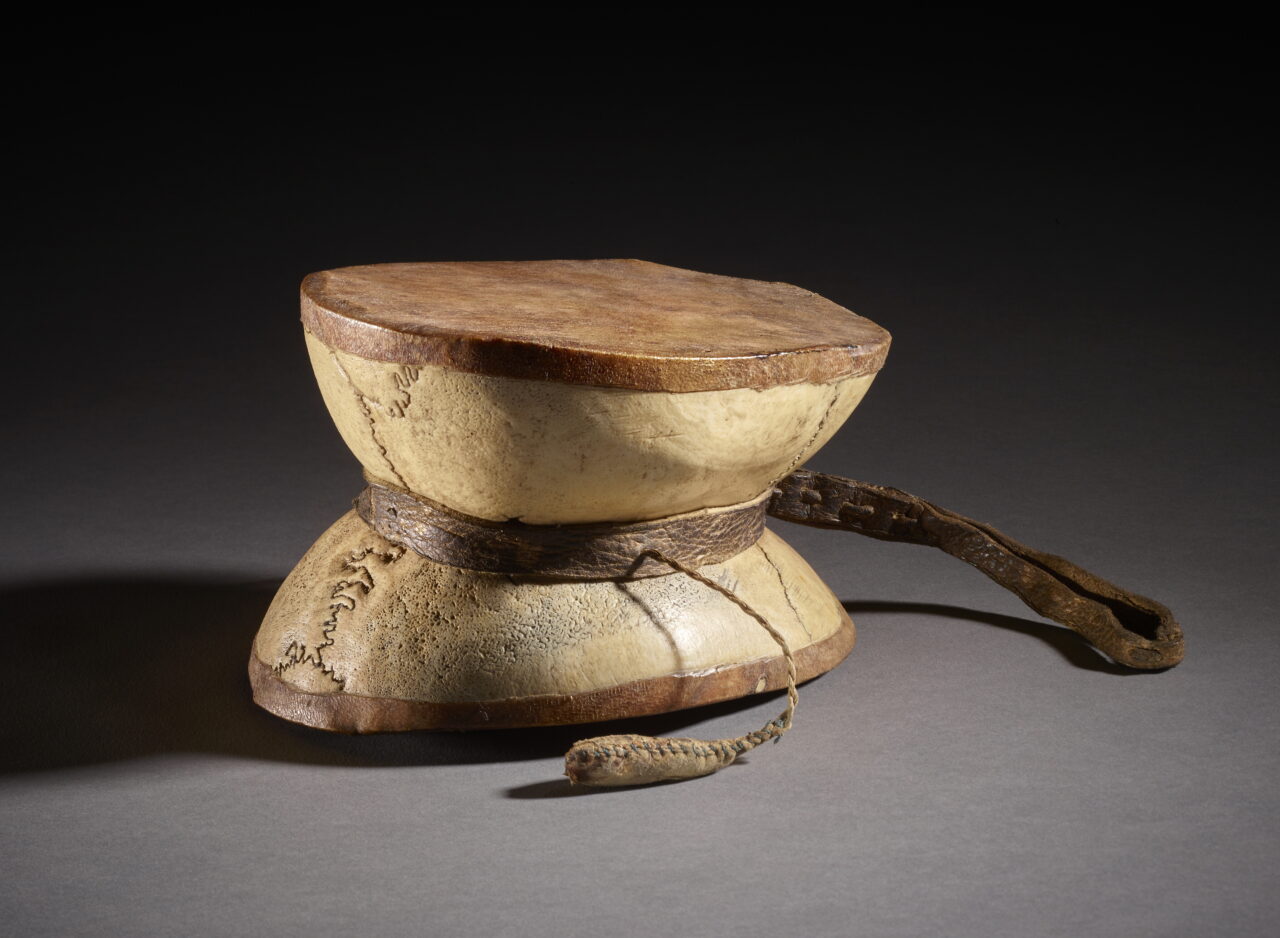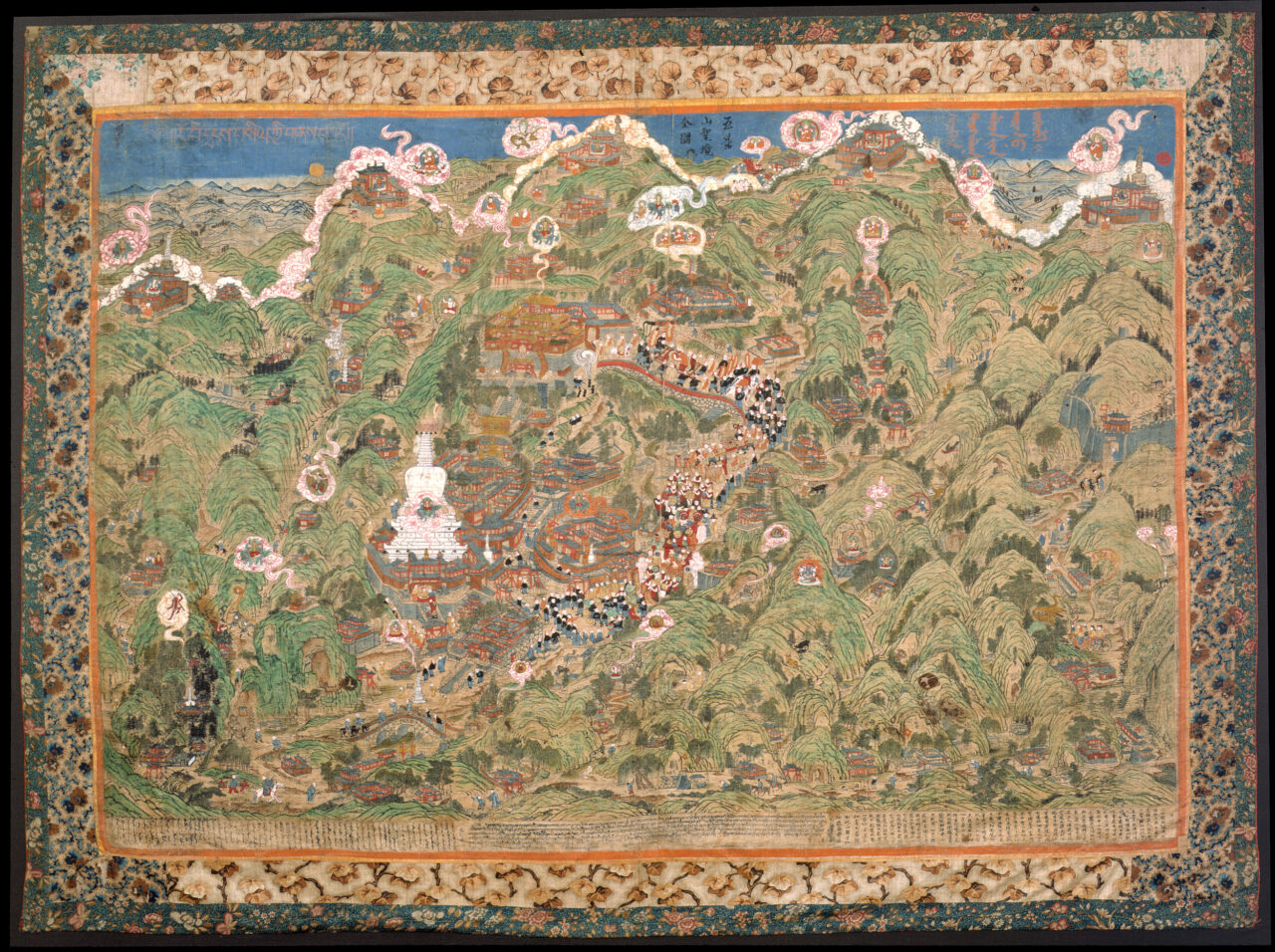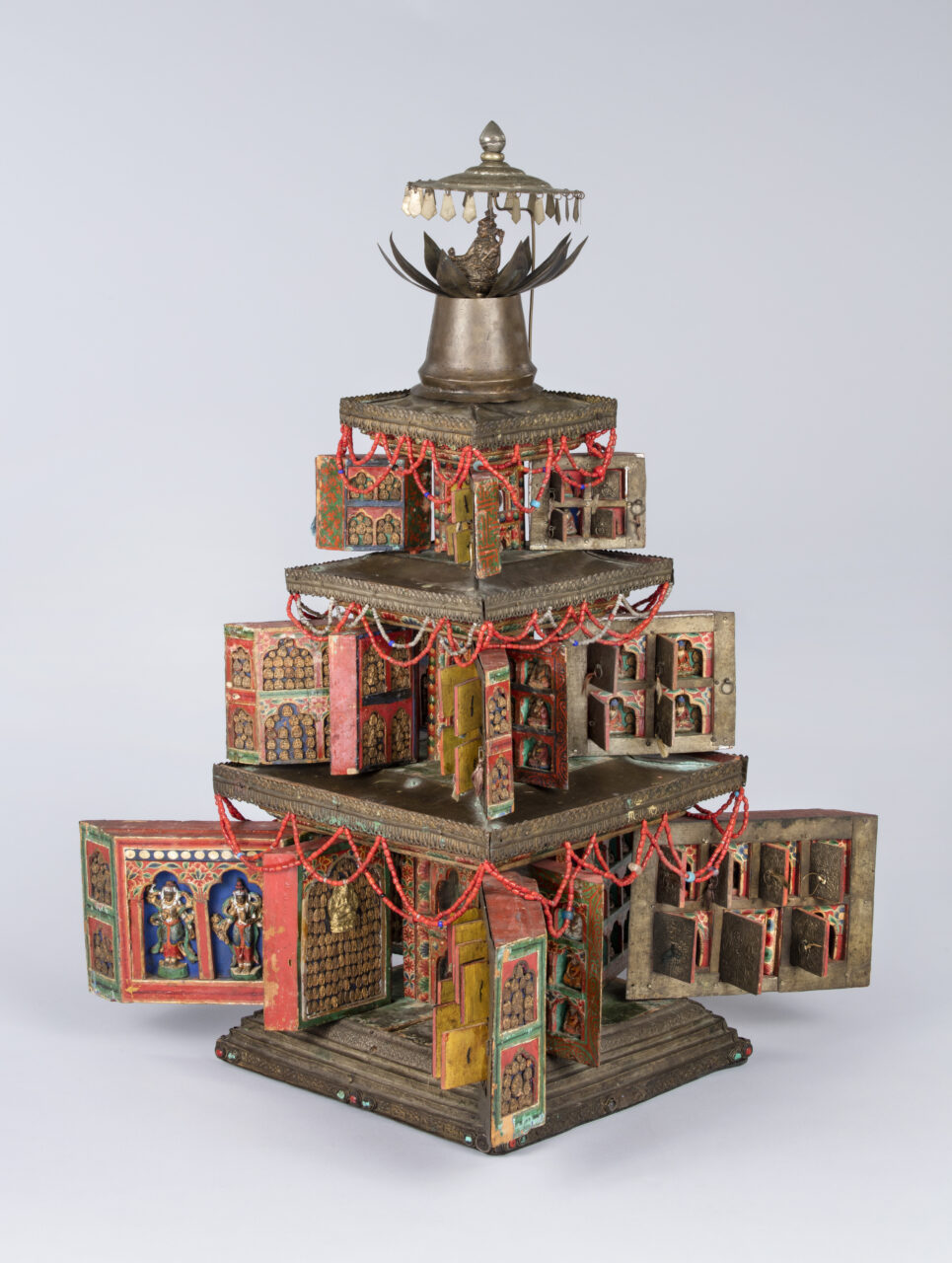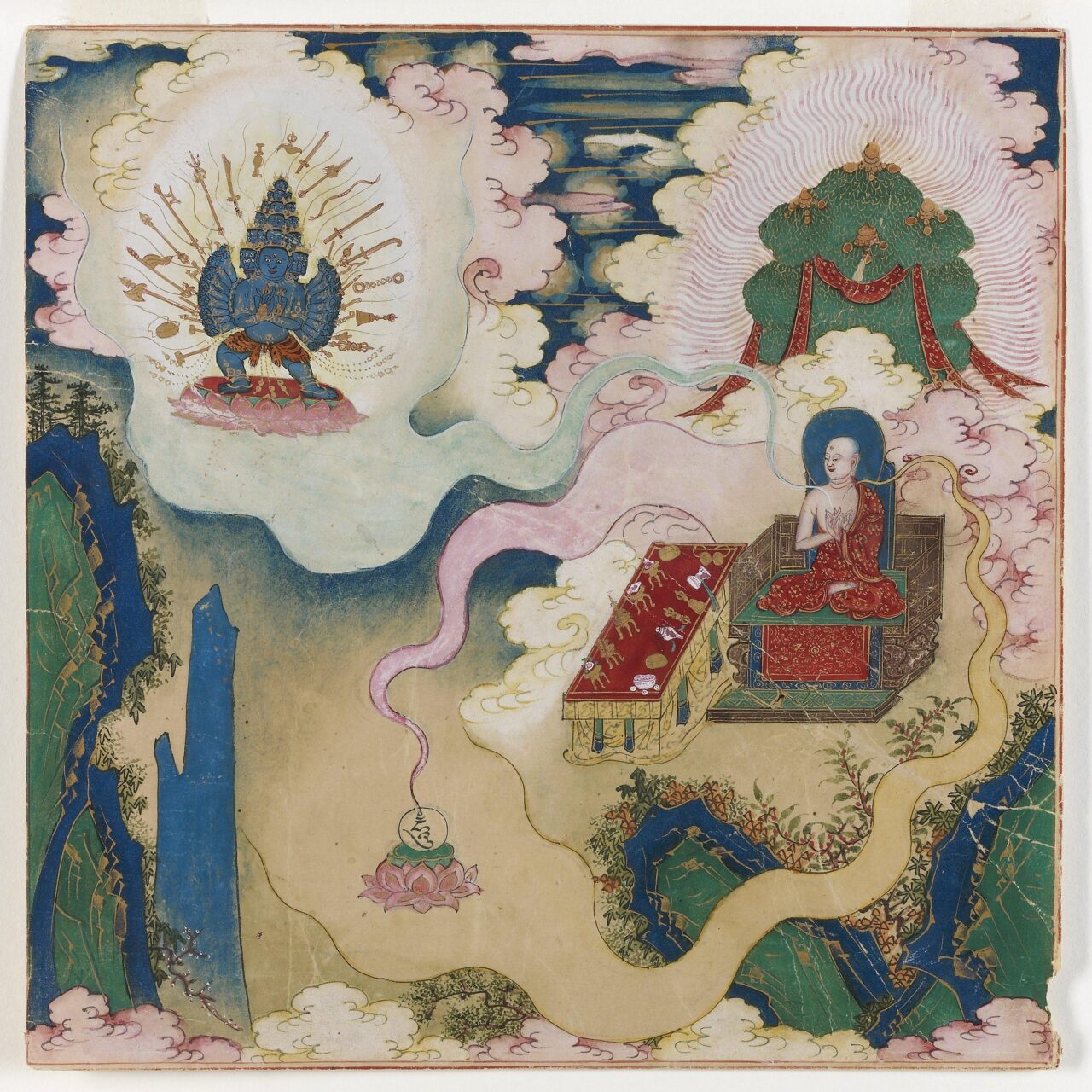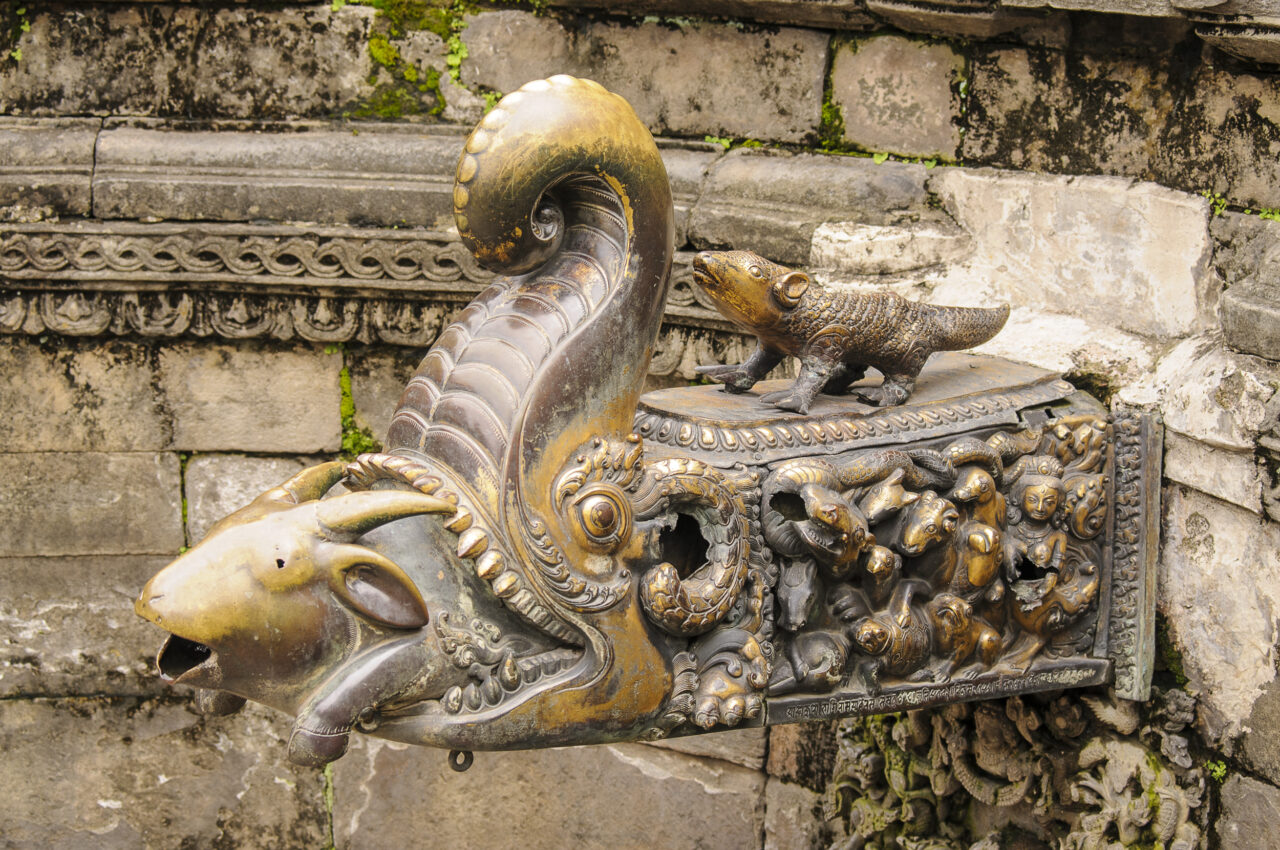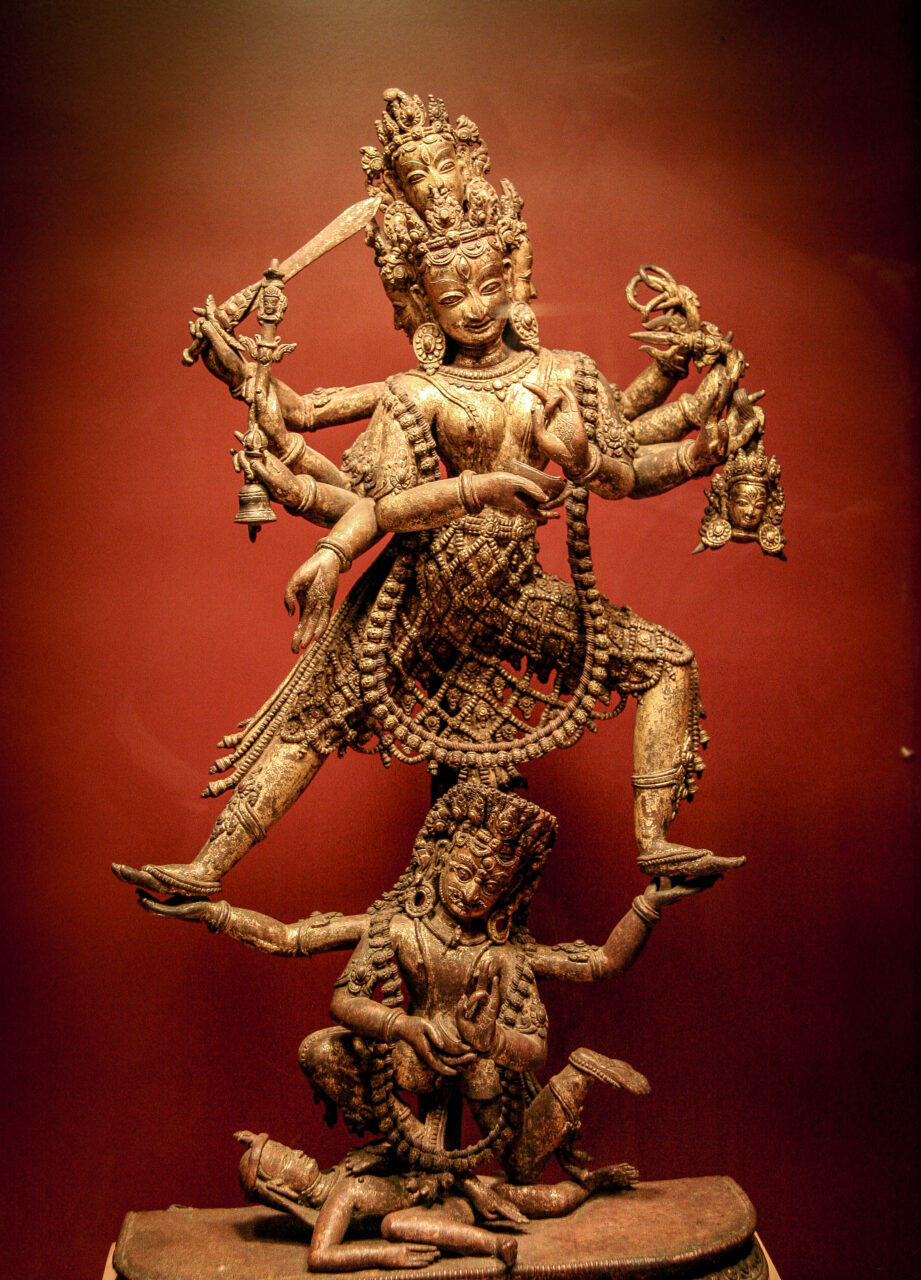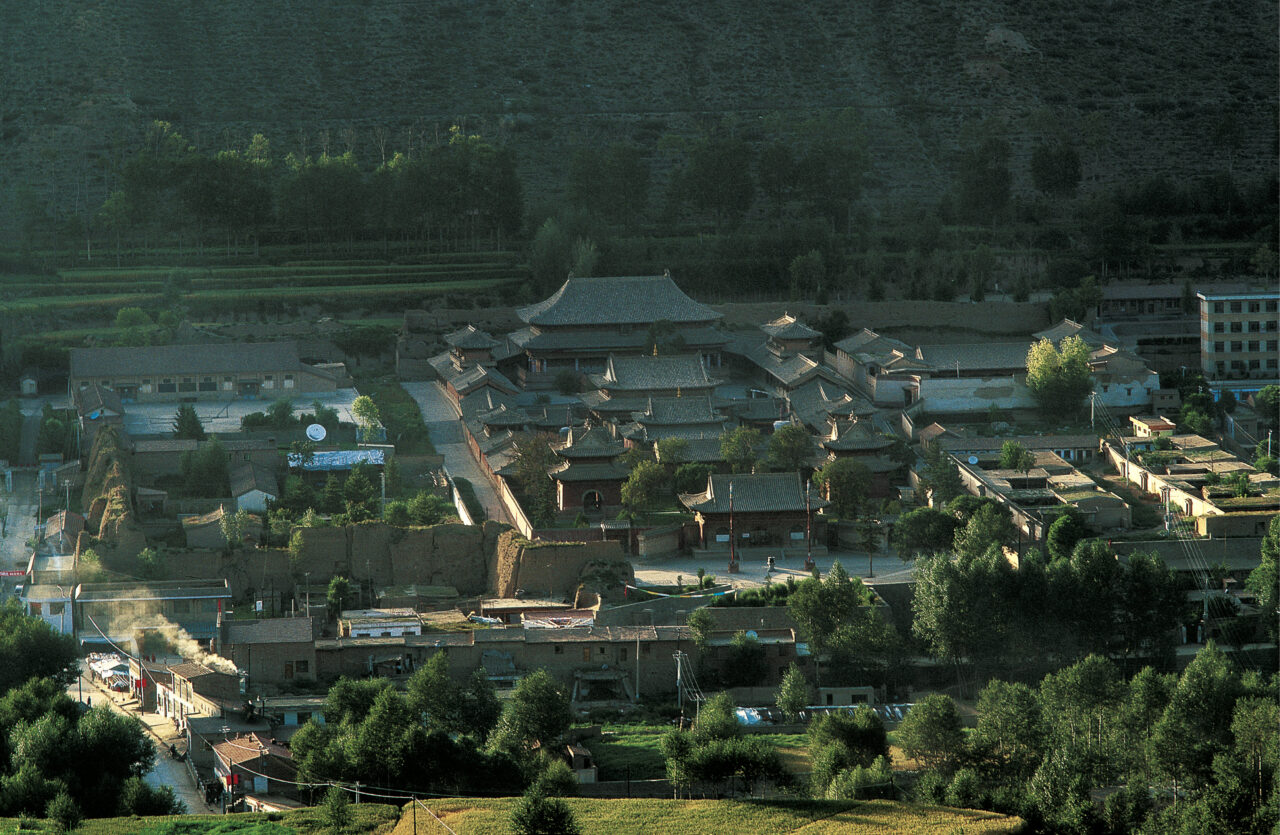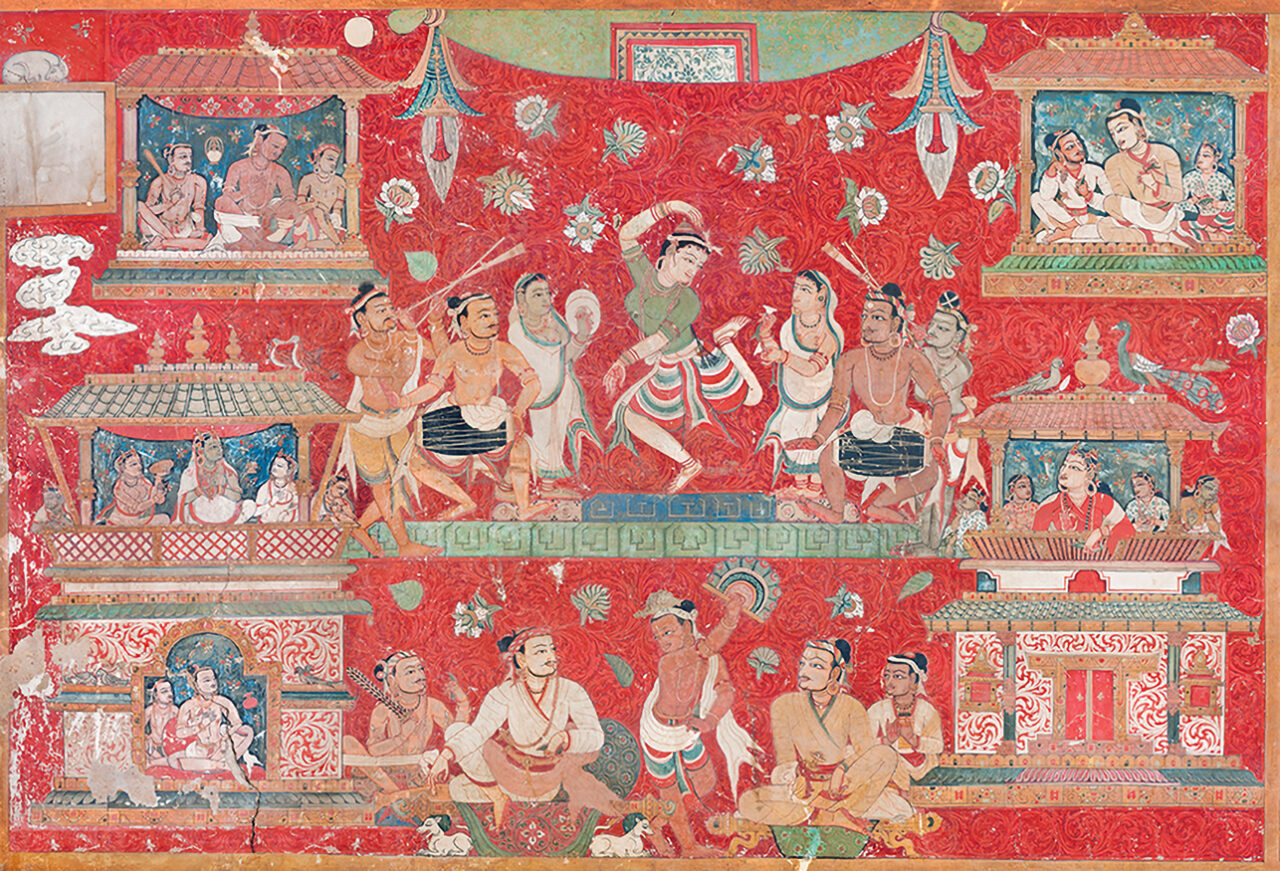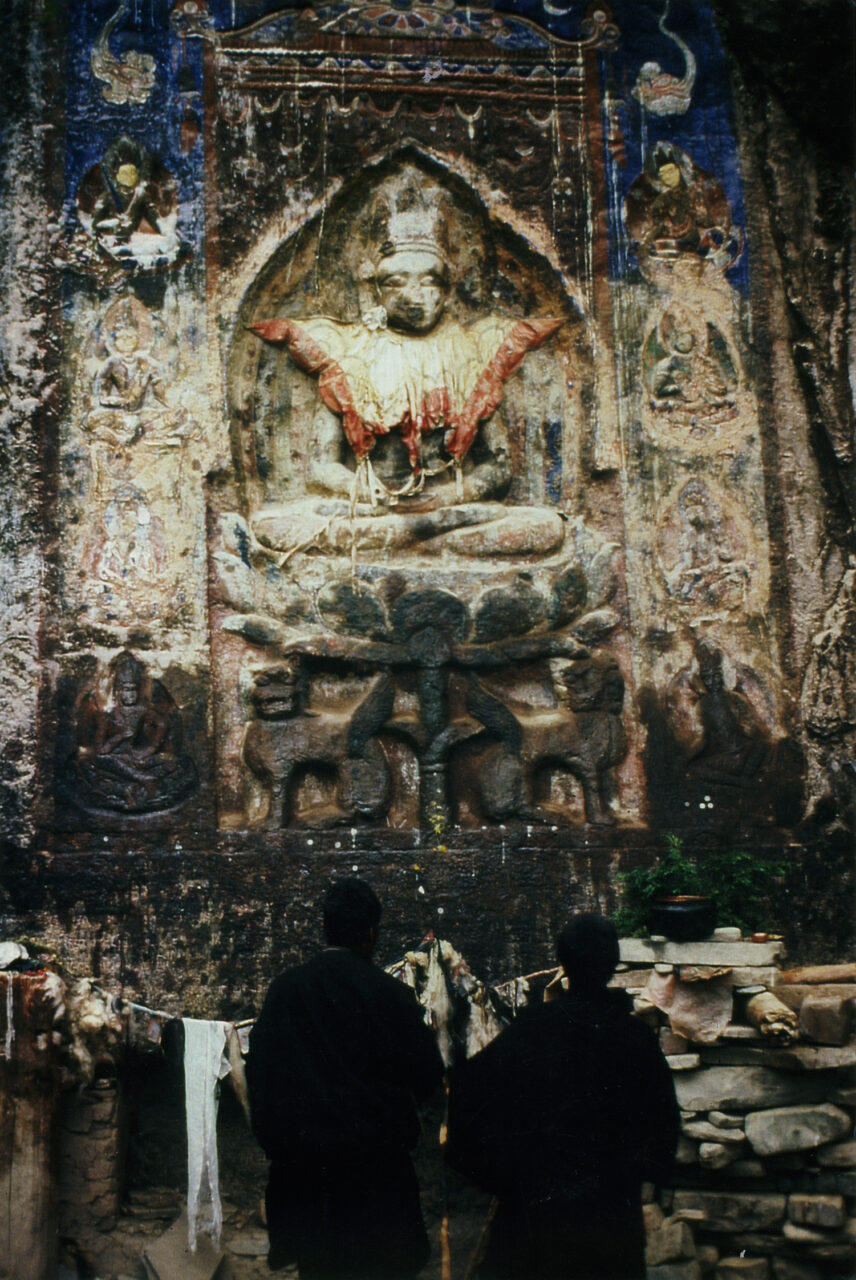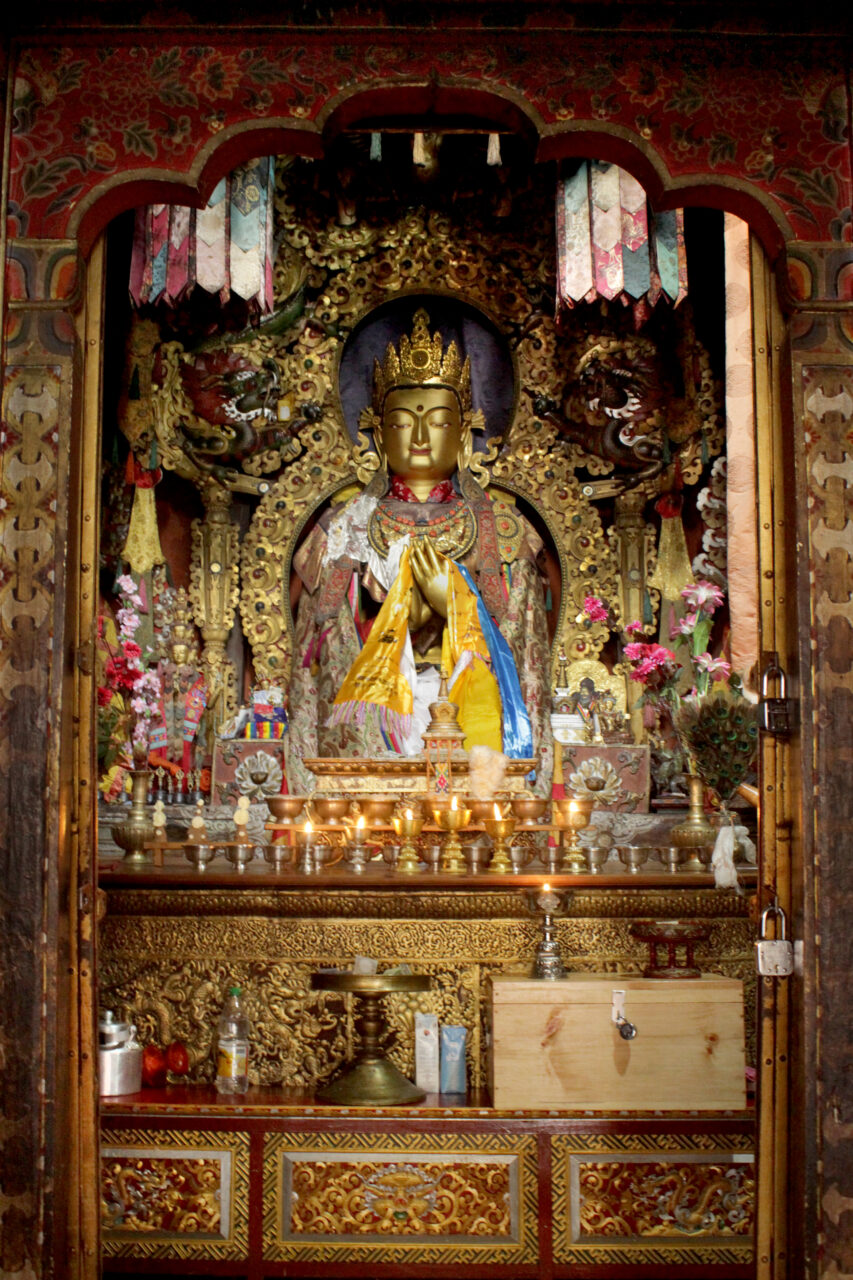Circumambulation means walking around something. Himalayan Buddhists often circumambulate as a form of veneration and generate/accrue merit by walking in a clockwise direction around stupas, monasteries, or sacred mountains. Bonpos do the same thing, except counter-clockwise.
In most Asian religious traditions, when an image of a deity is made, it must be made sacred (“consecrated”) by inviting the deity to inhabit it. A variety of rituals can be involved in this, including dotting the image’s eyes, visualizing the descent of the deity into the image, writing mantras on the back of a thangka, or placing sacred texts and mantras inside of a statue.
In Buddhist context, donor is a person who contributes to or commissions a religious work of art. This act is intended to increase merit on behalf of the benefactor and is dedicated to the benefit of all. It is also usually done for a specific purpose, such as longevity, prosperity, or well-being; to advance religious practice; or to ensure a good rebirth of a deceased relative, teacher, or friend. A similar practice is also known in Hinduism and Bon.
A harmika is an architectural element that forms a square balustrade section on top of the dome (Sanskrit: anda) of a stupa, and encloses the spire (Sanskrit: yasti) that rises above it. The harmika represents a divine abode.
The Newar People of the Kathmandu Valley of Nepal retain the unbroken traditions of Mahayana and Vajrayana Buddhism south of the Himalayas, preserving many ritual practices and Sanskrit-language texts that have been lost elsewhere. Celibate monasticism is no longer practiced among the Newars, but instead Buddhist ritualists are divided into two castes. One is the Shakyas, temple-priests who maintain ancient urban monasteries (Newar: bahas, bahis) as places of worship. The other is the Vajracharyas, tantric specialists who perform rituals at communal festivals and important life events. The Svayambhu Stupa is the most important ritual center for Newar Buddhists and the center of the Kathmandu Mandala. Today many Newars also practice Theravada and Tibetan Buddhism.
Stupas are monuments that initially contained cremated remains of Buddha Shakyamuni or important monks, his disciples, and subsequently other material and symbolic relics associated with the Buddha’s body, teaching, and enlightened mind. As representations of the Buddha’s presence in the world, stupas with their contents—texts, relics, tsatsas—continue to be important objects of Buddhist worship in their diverse forms of domed structures, multistoried pagodas, and portable sculptures. The original form of stupas was an earthen dome-shaped mound containing the remains in reliquary vessels or urns deposited within the innermost core. The dome would often be successively enlarged and surrounded by a path for a walk around in a clockwise direction and veneration (circumambulation)





